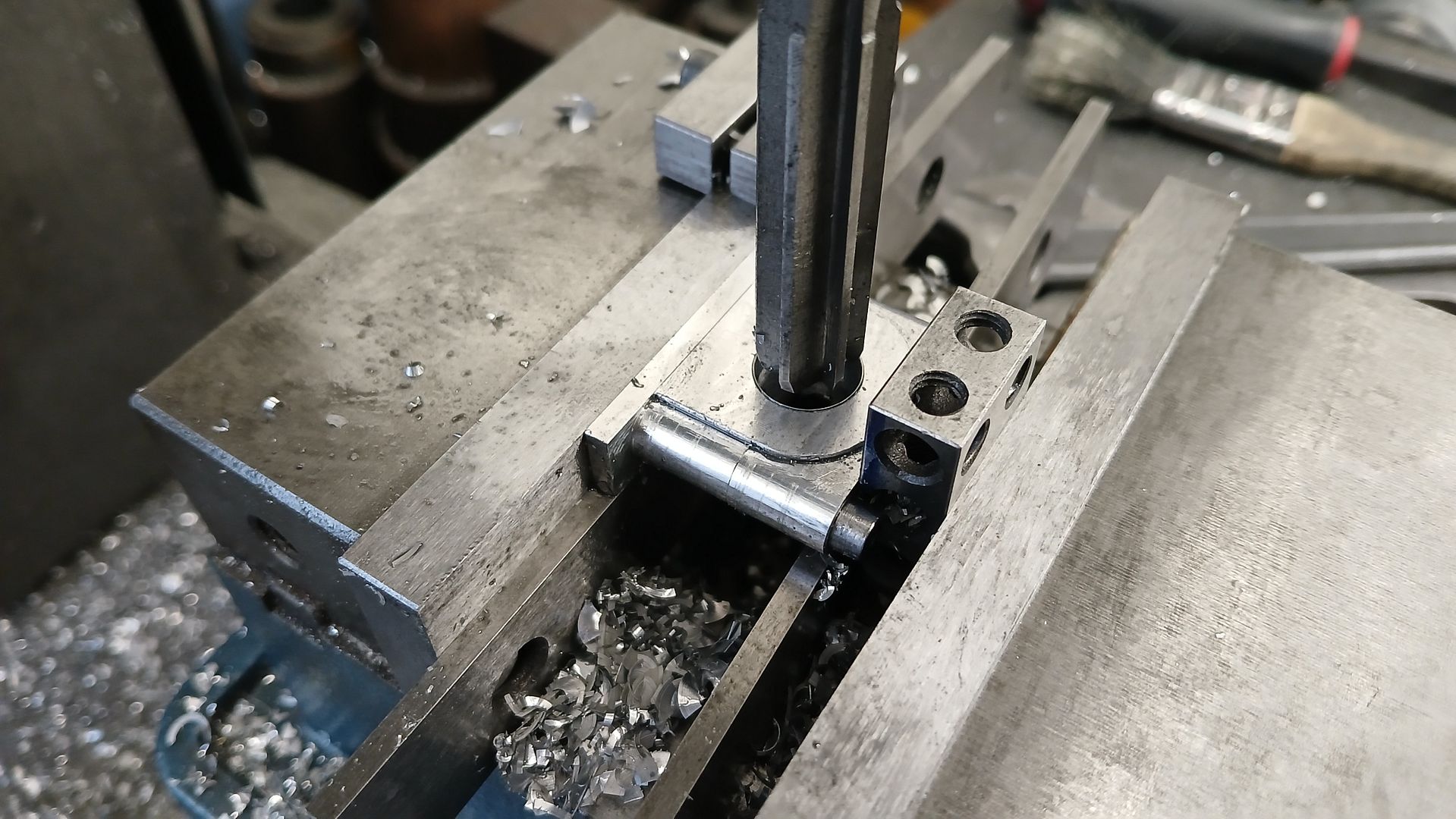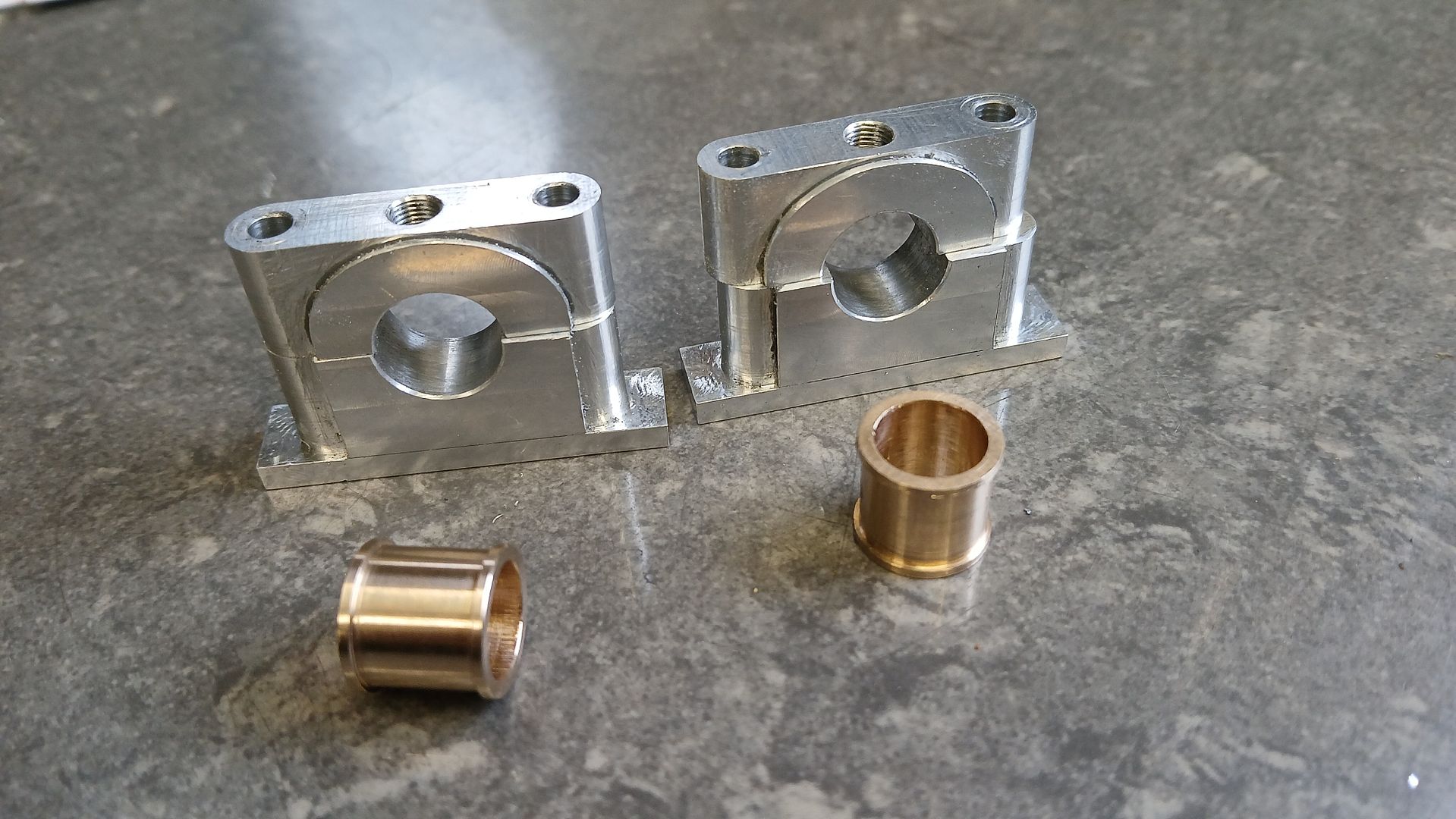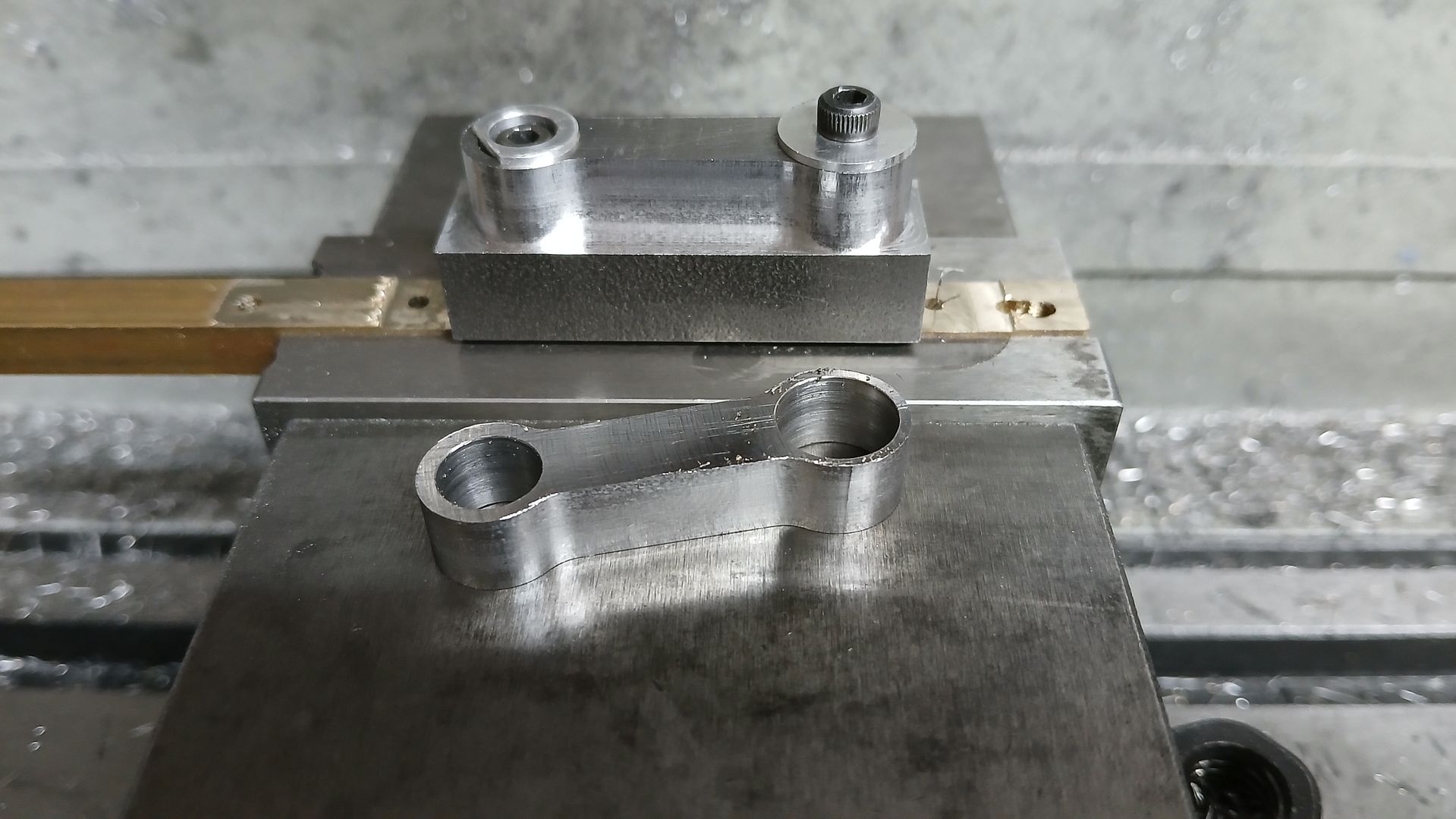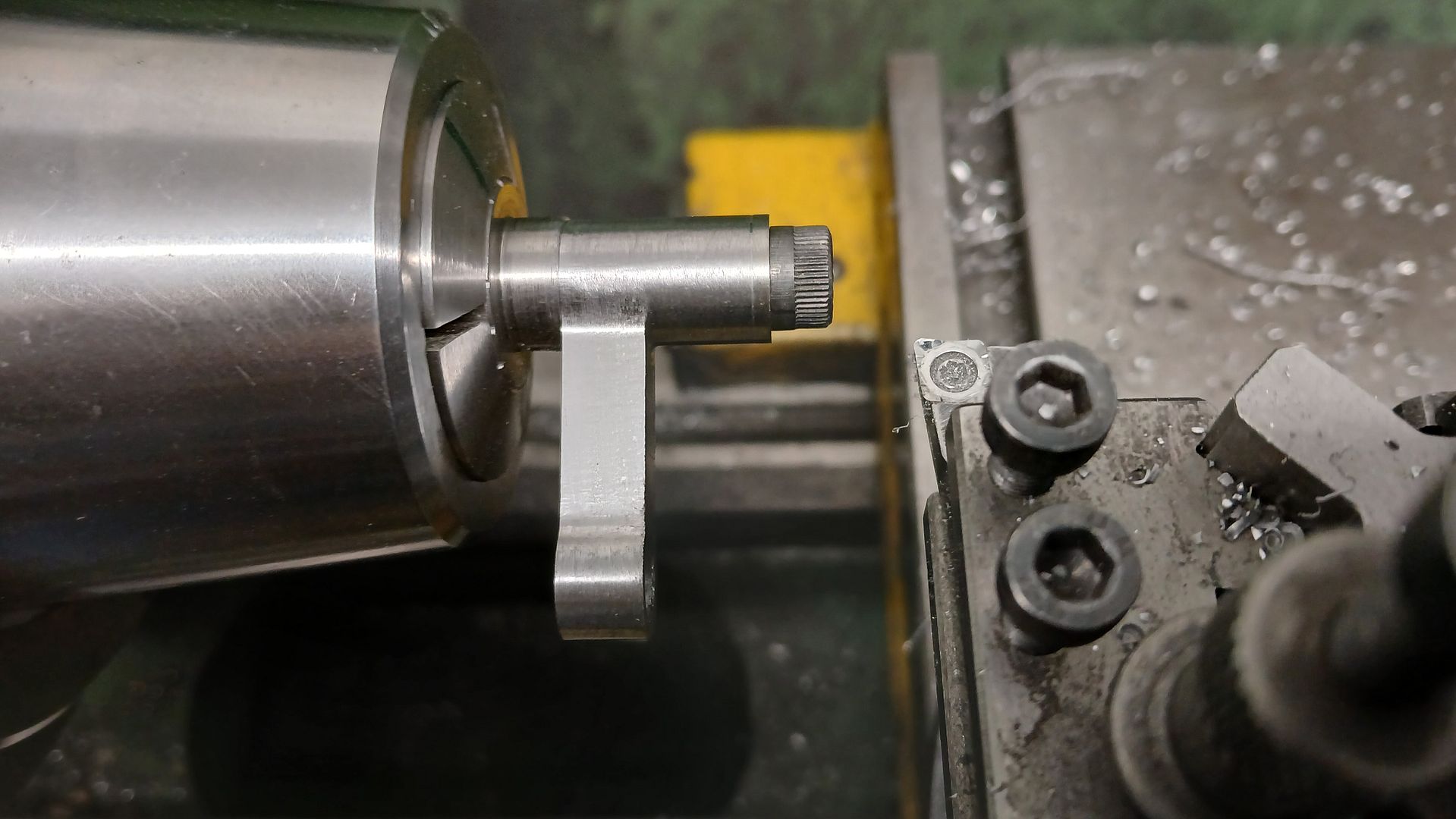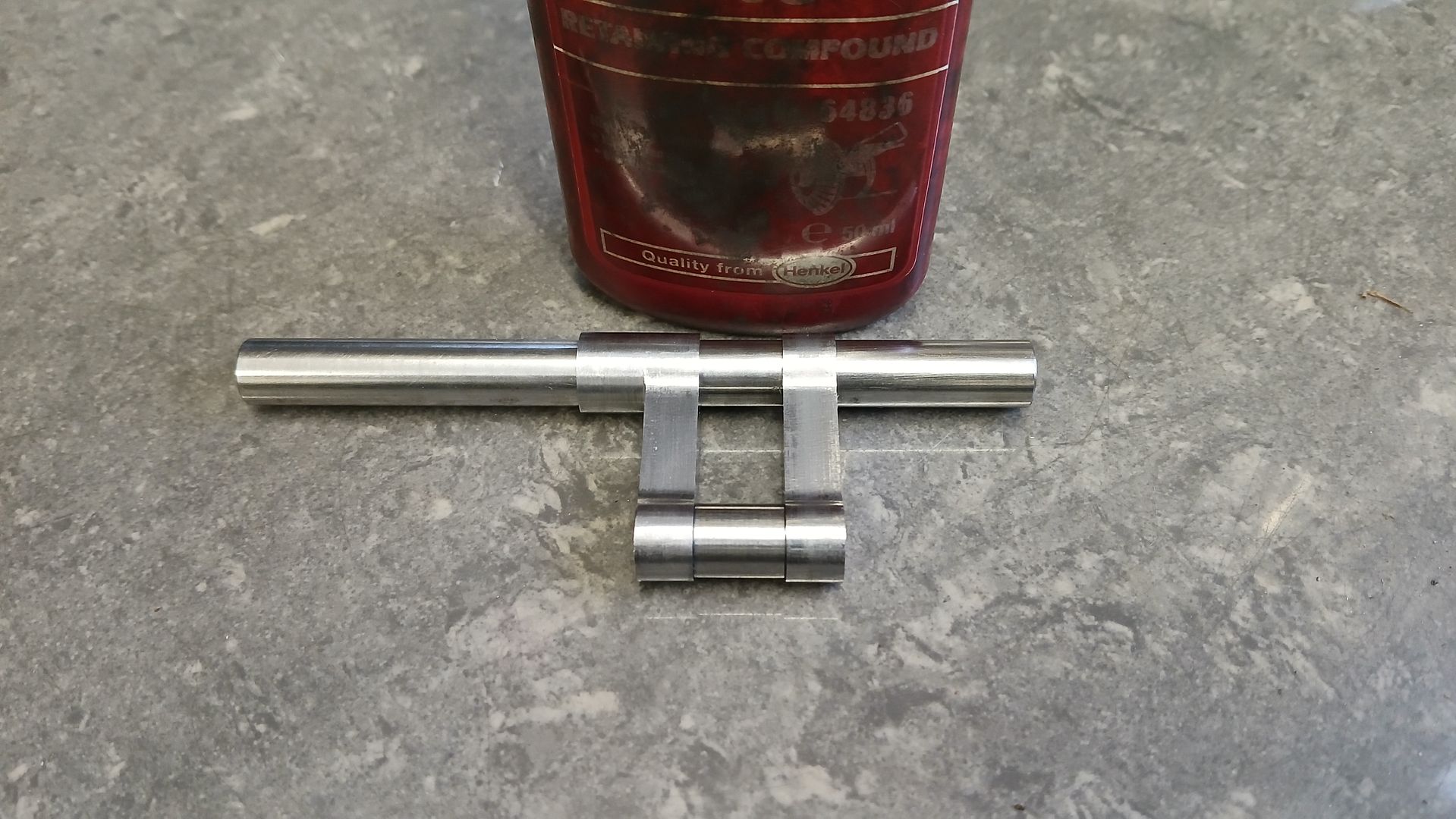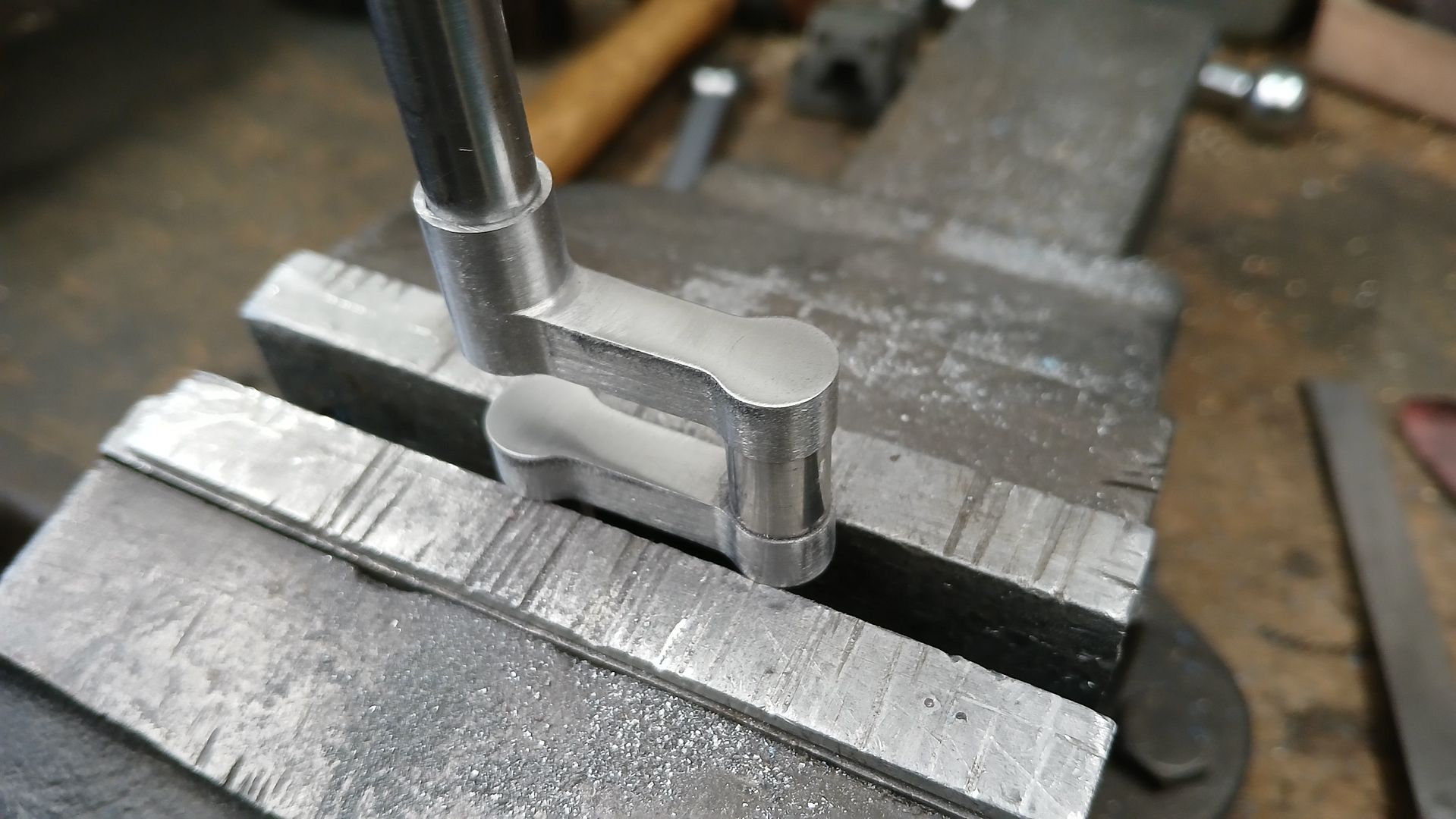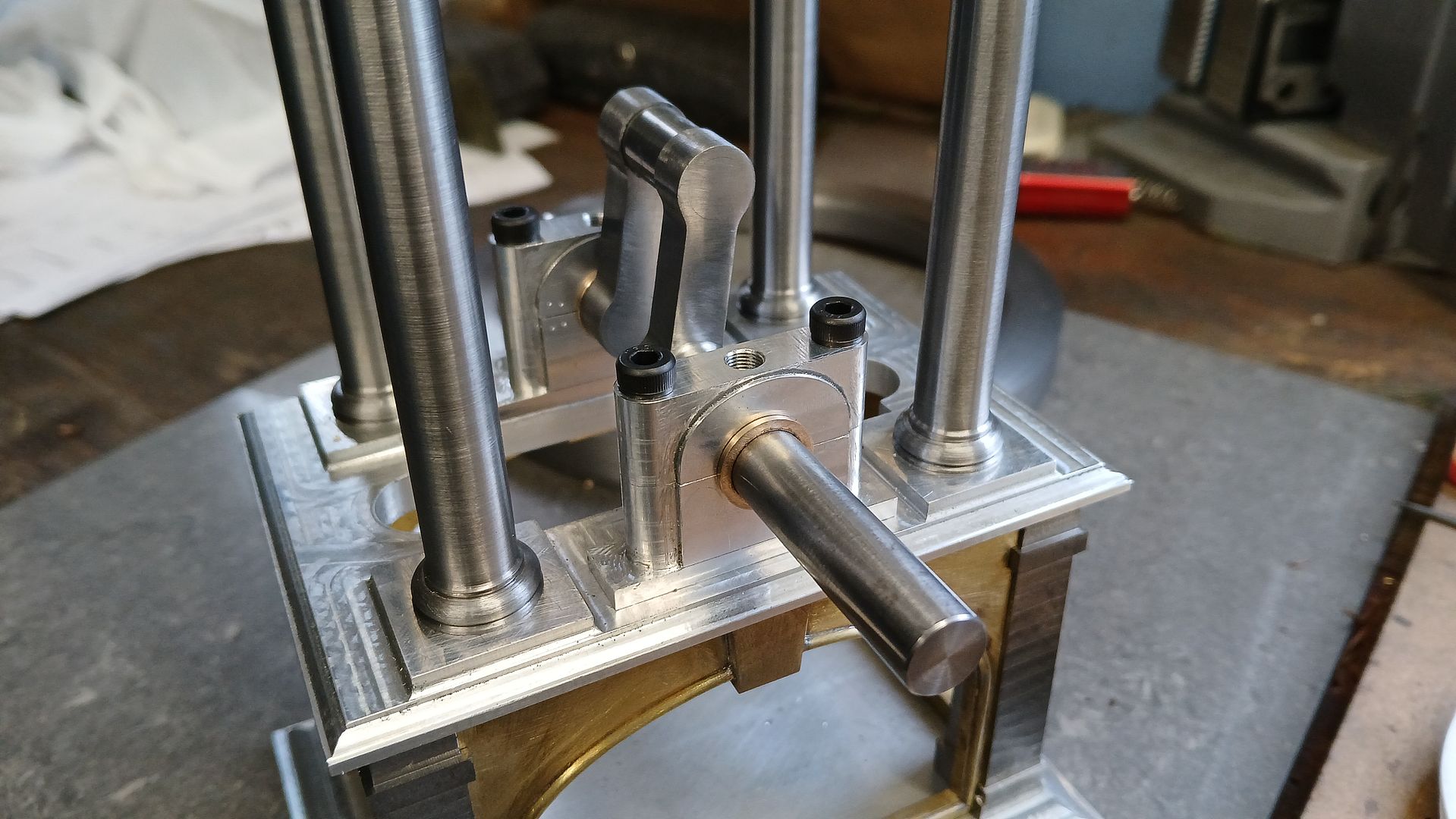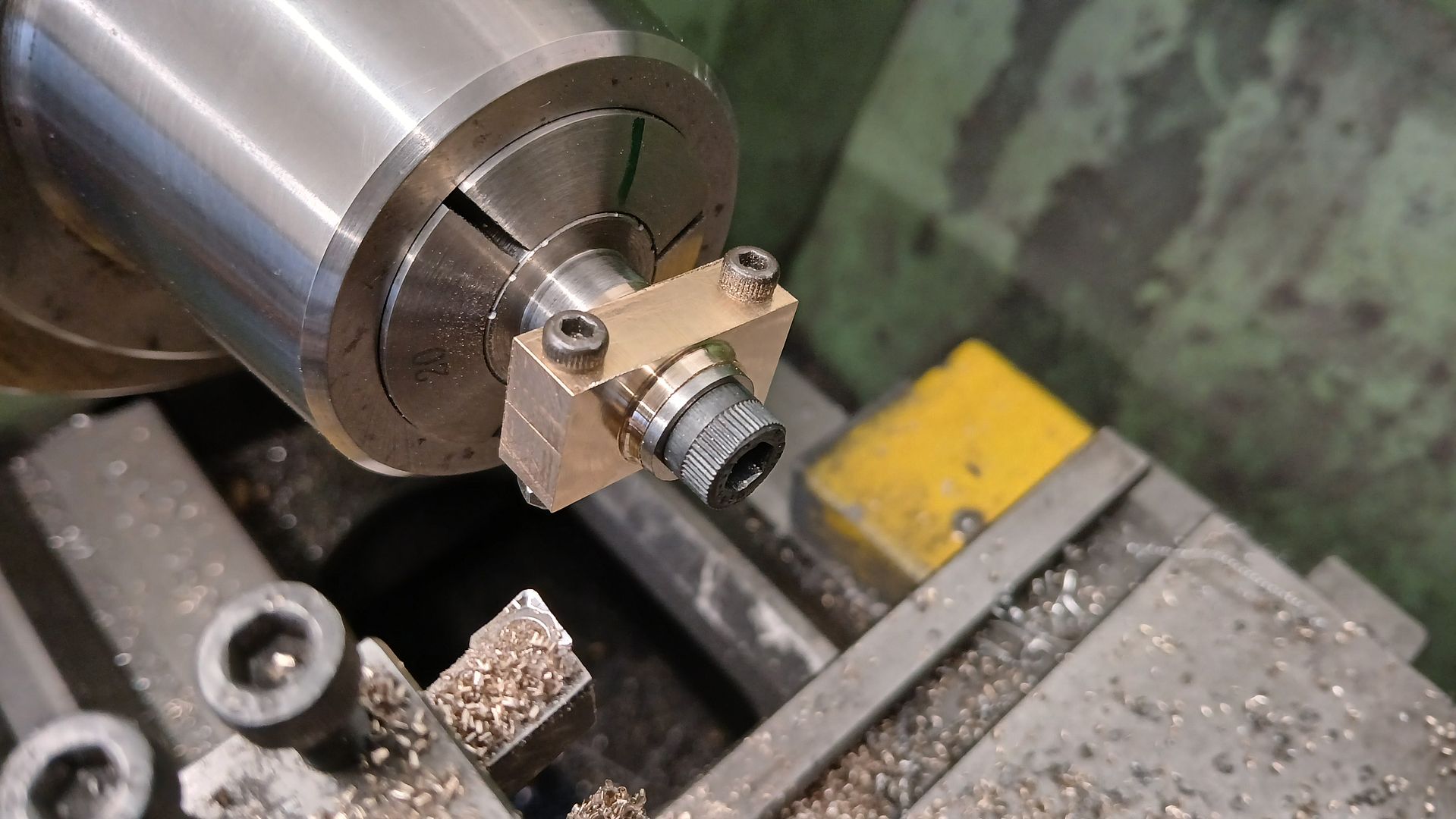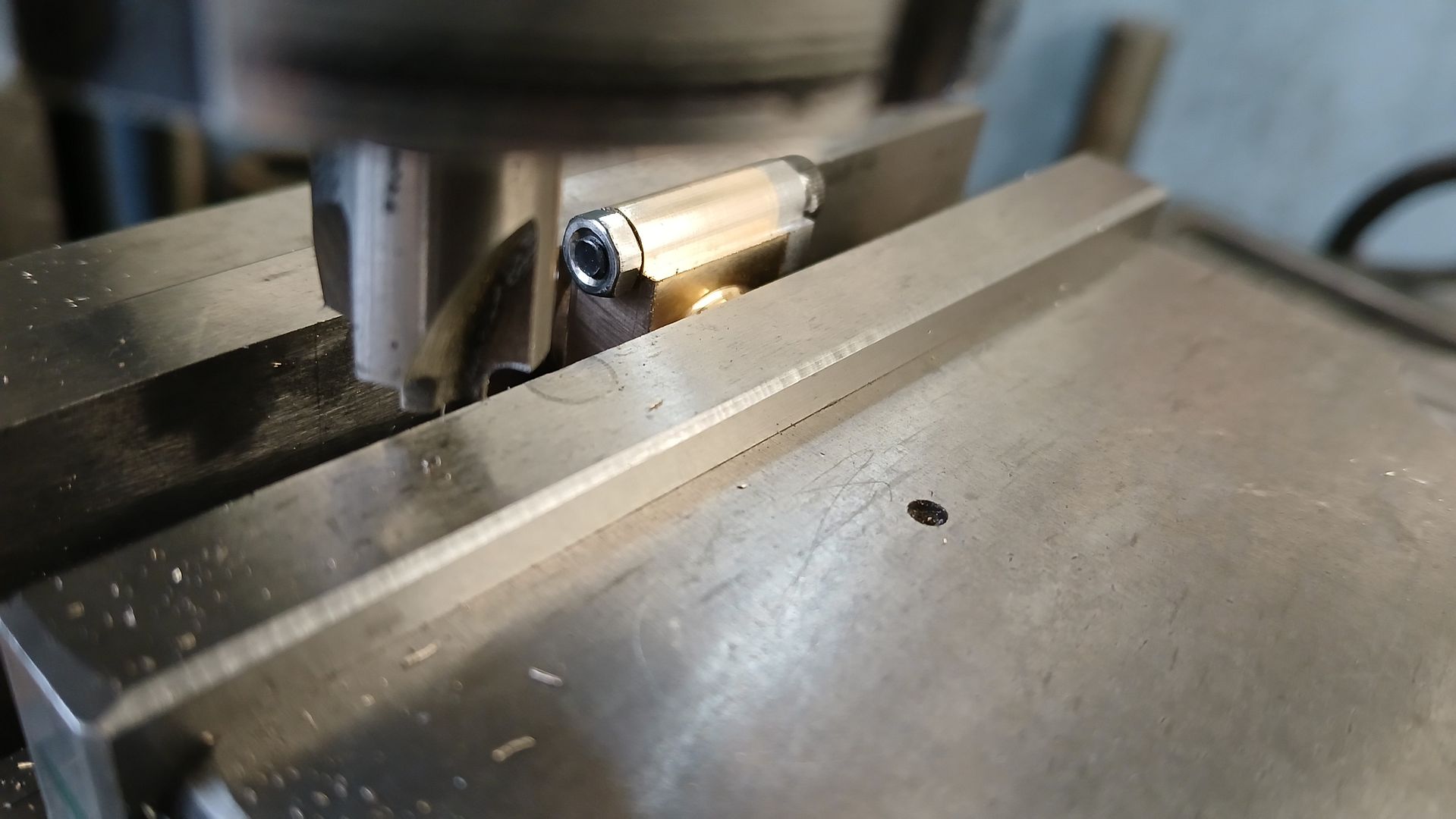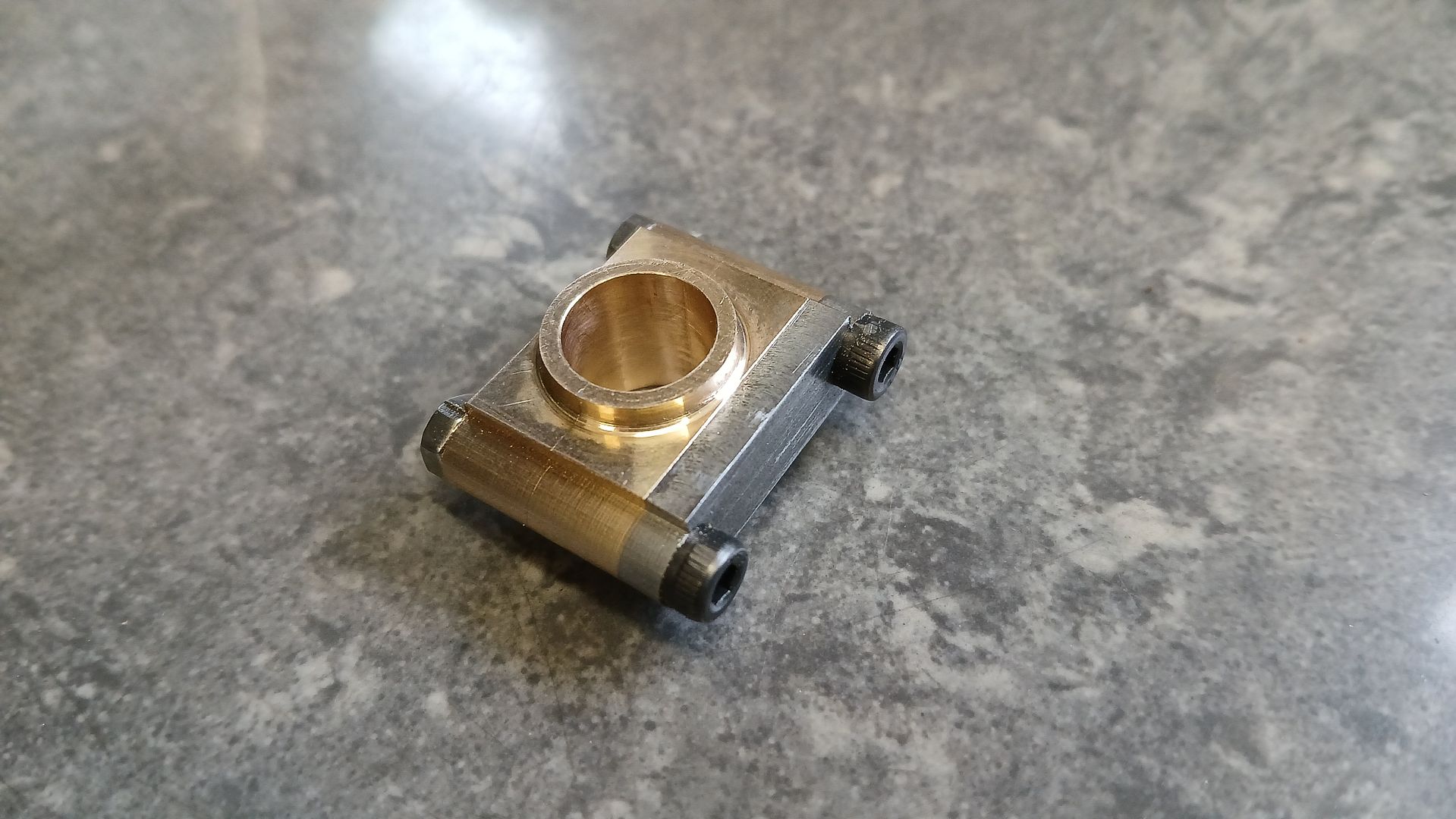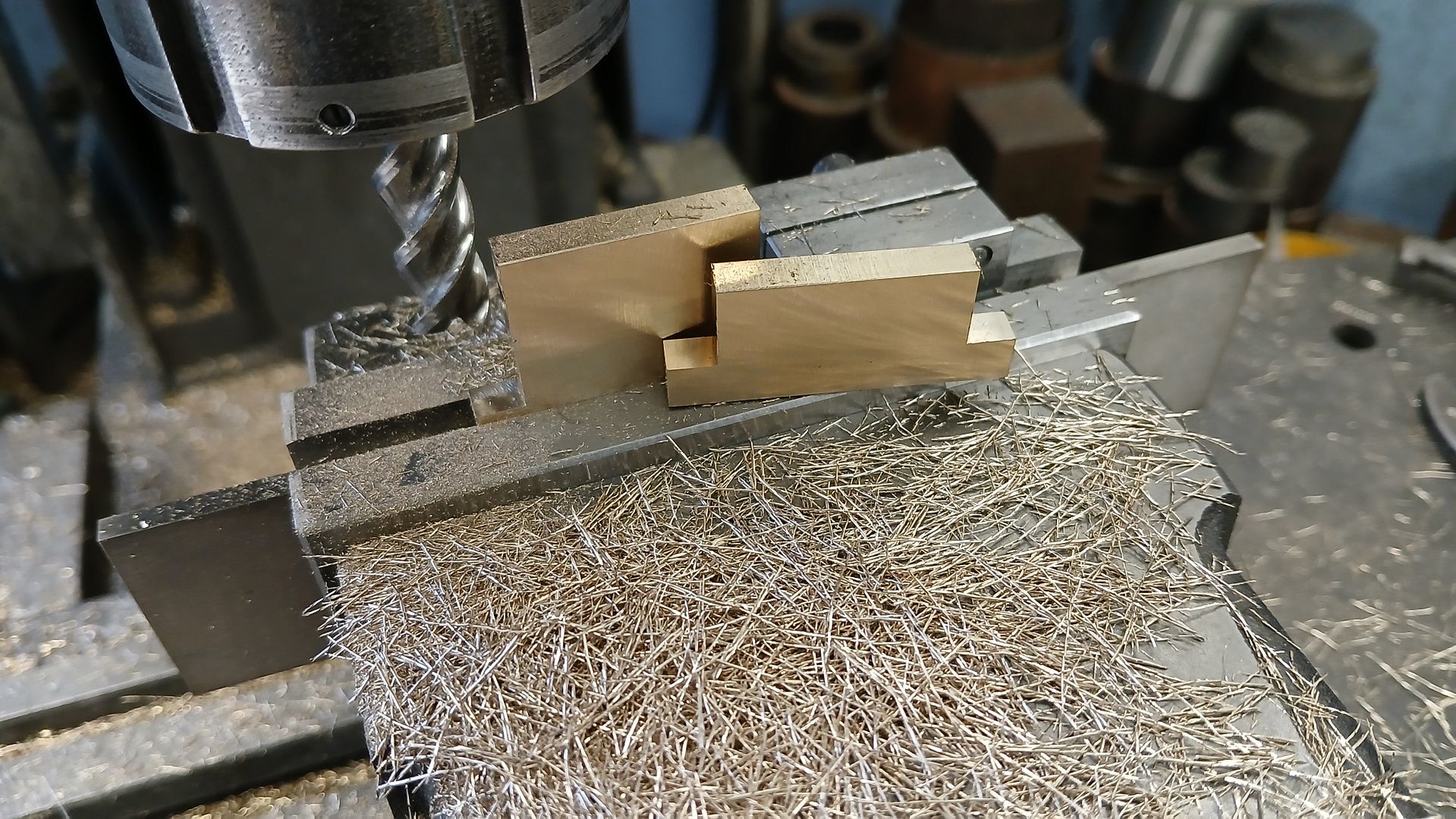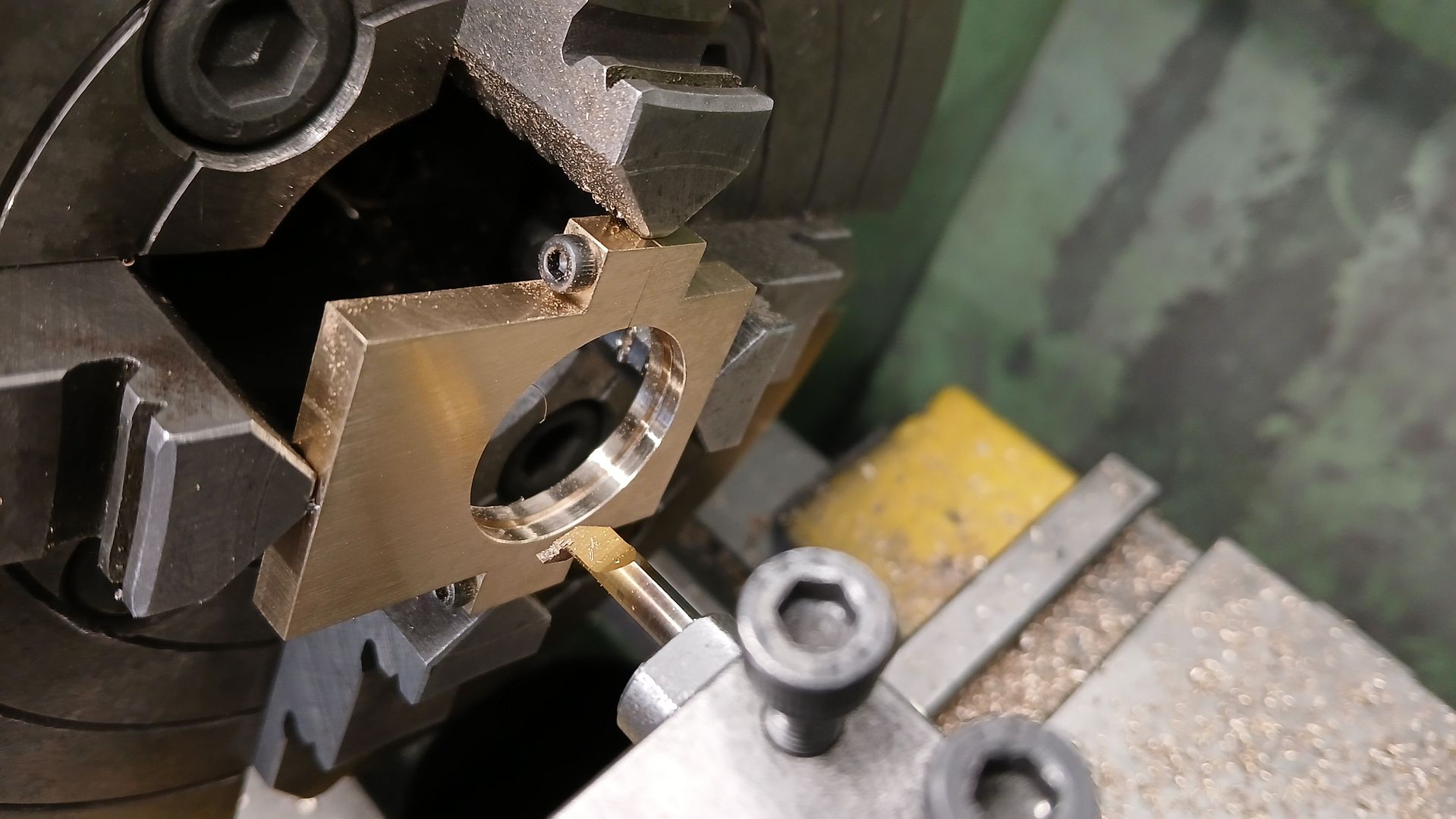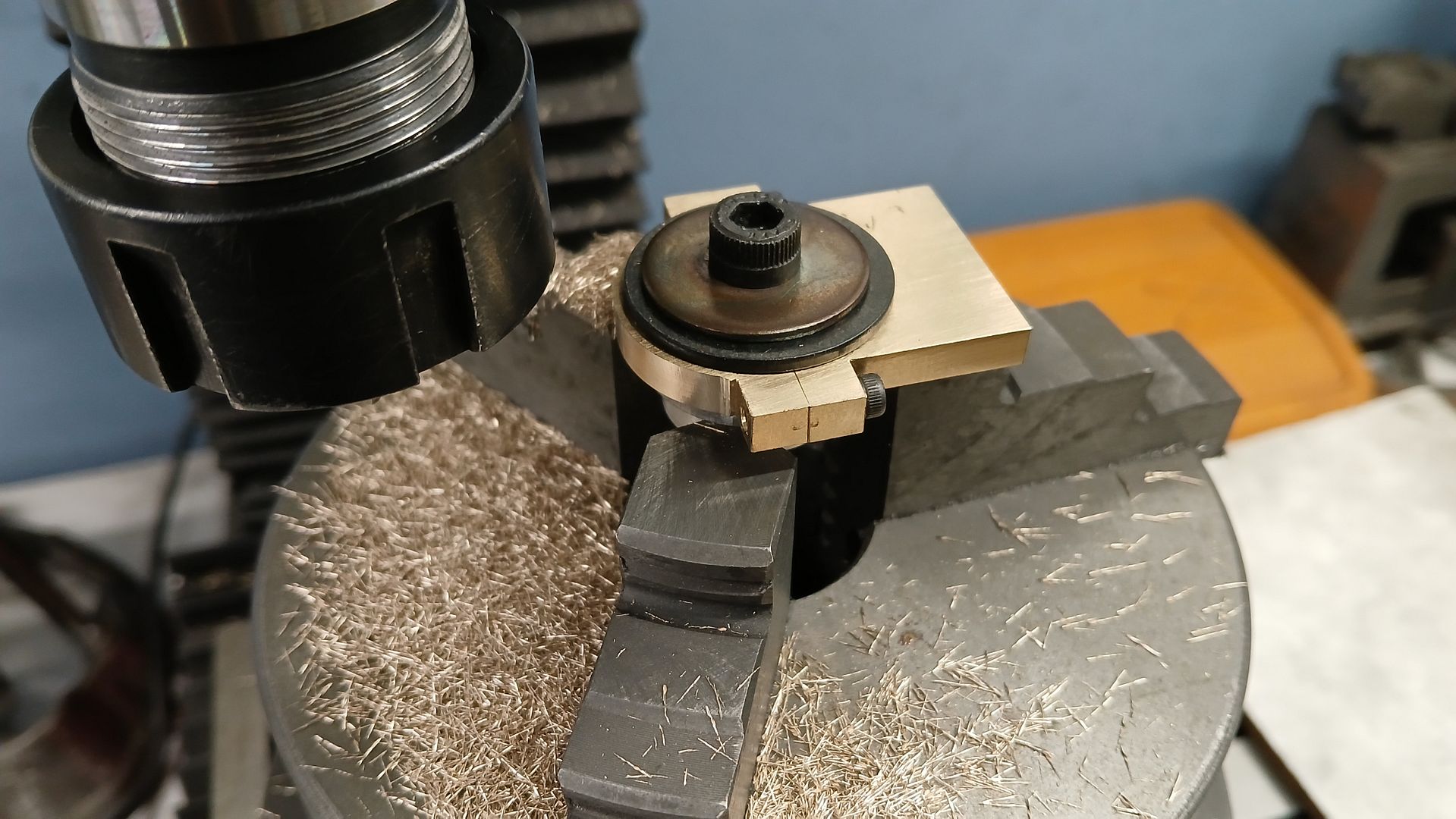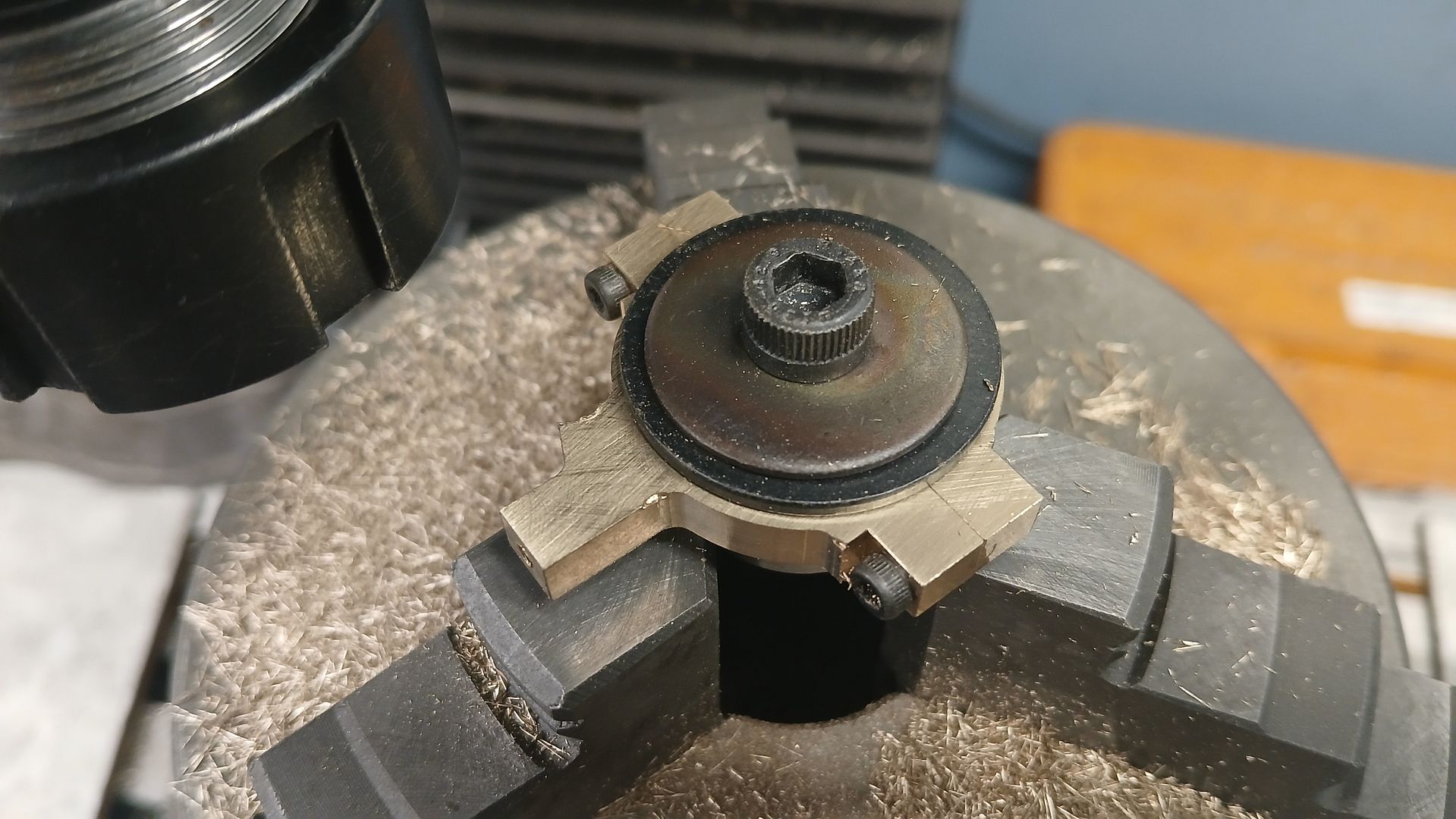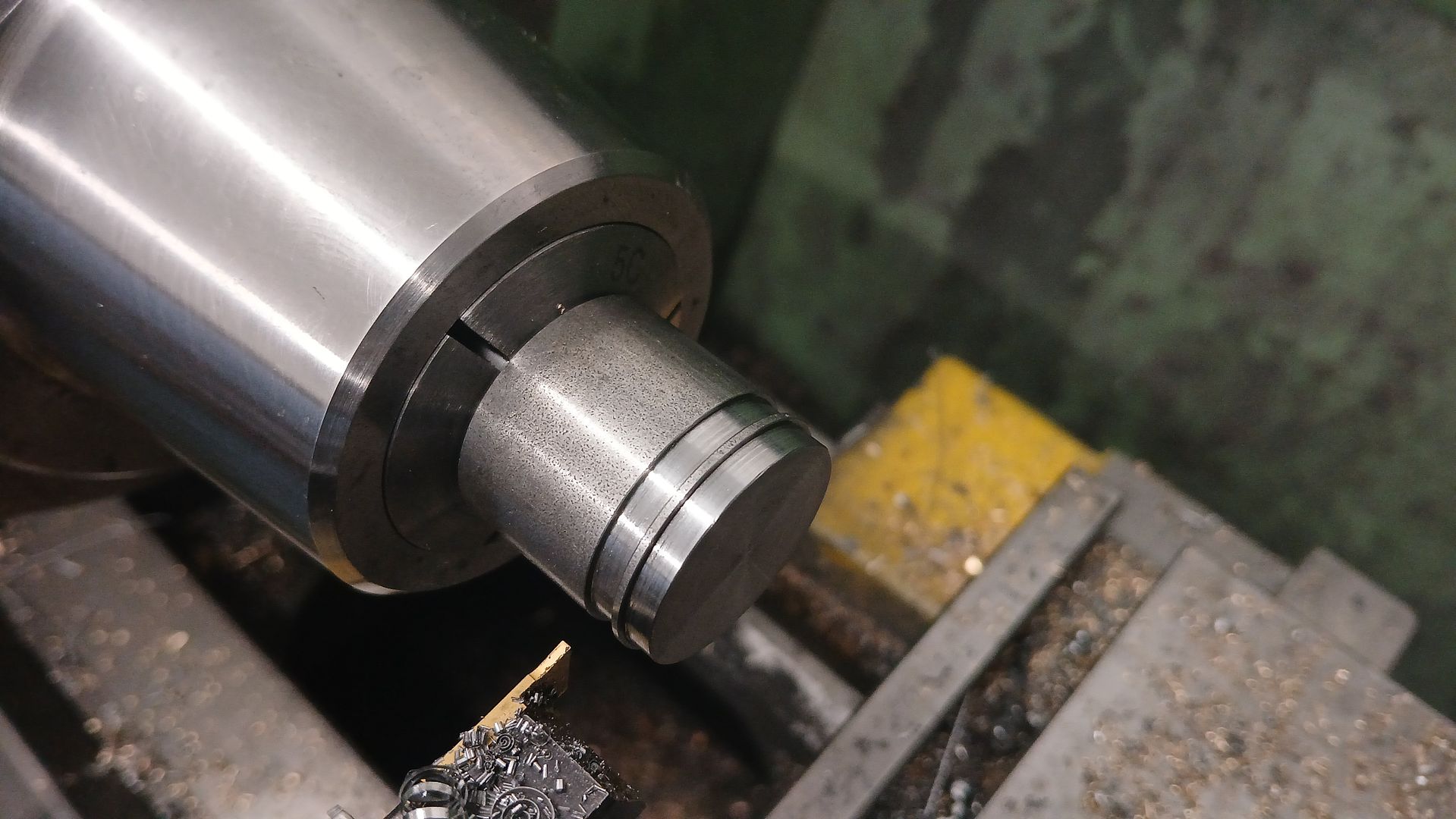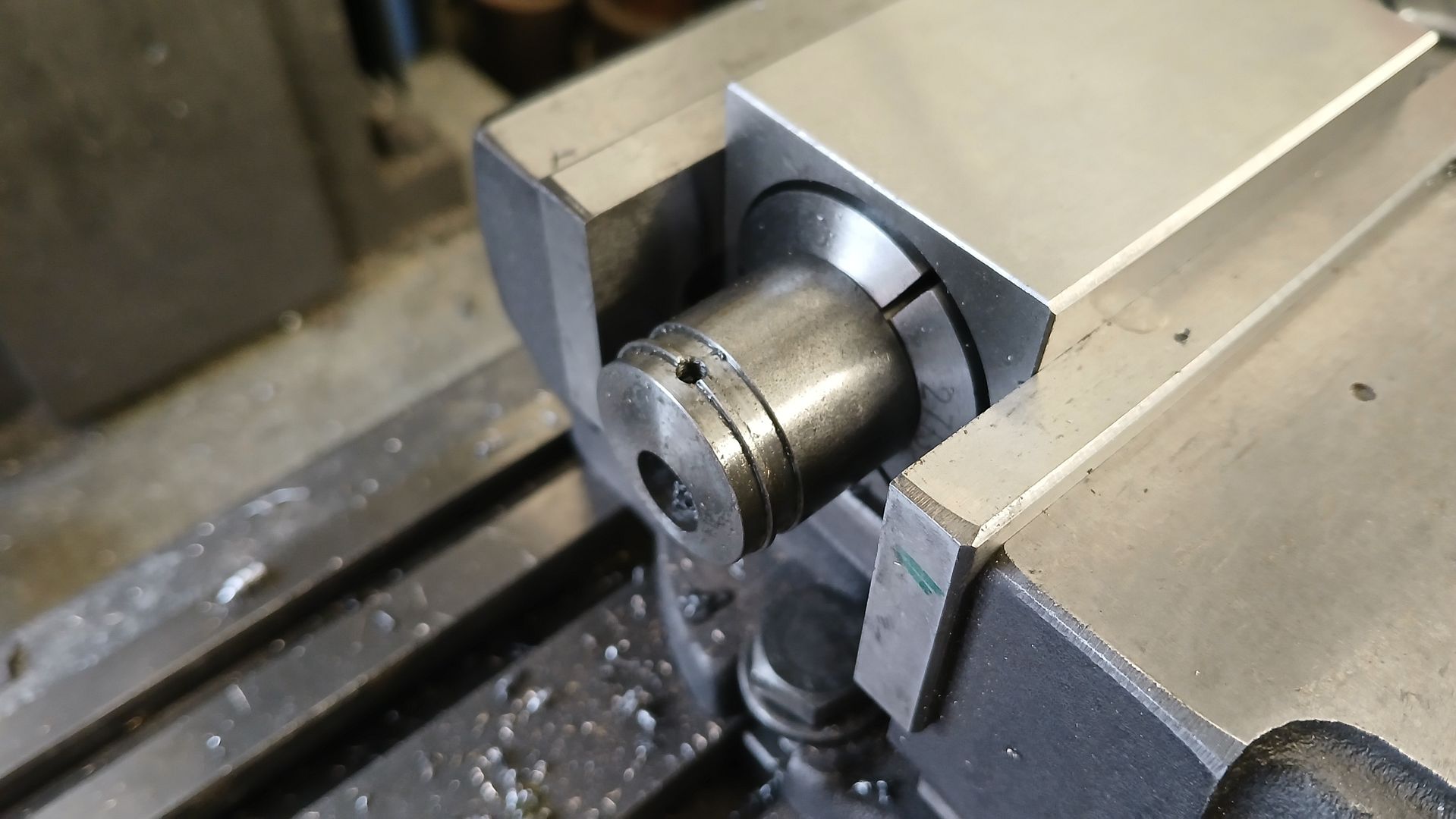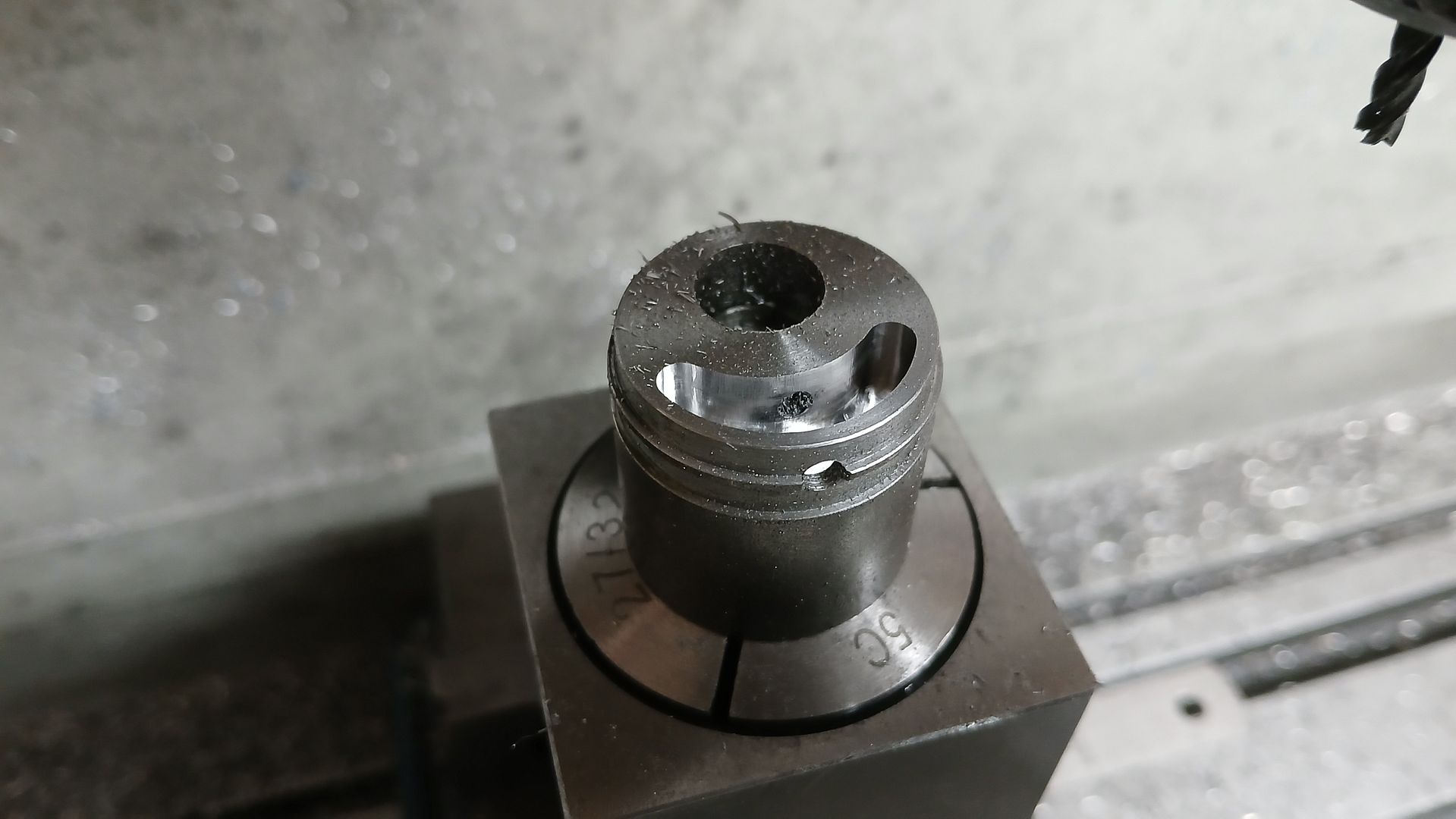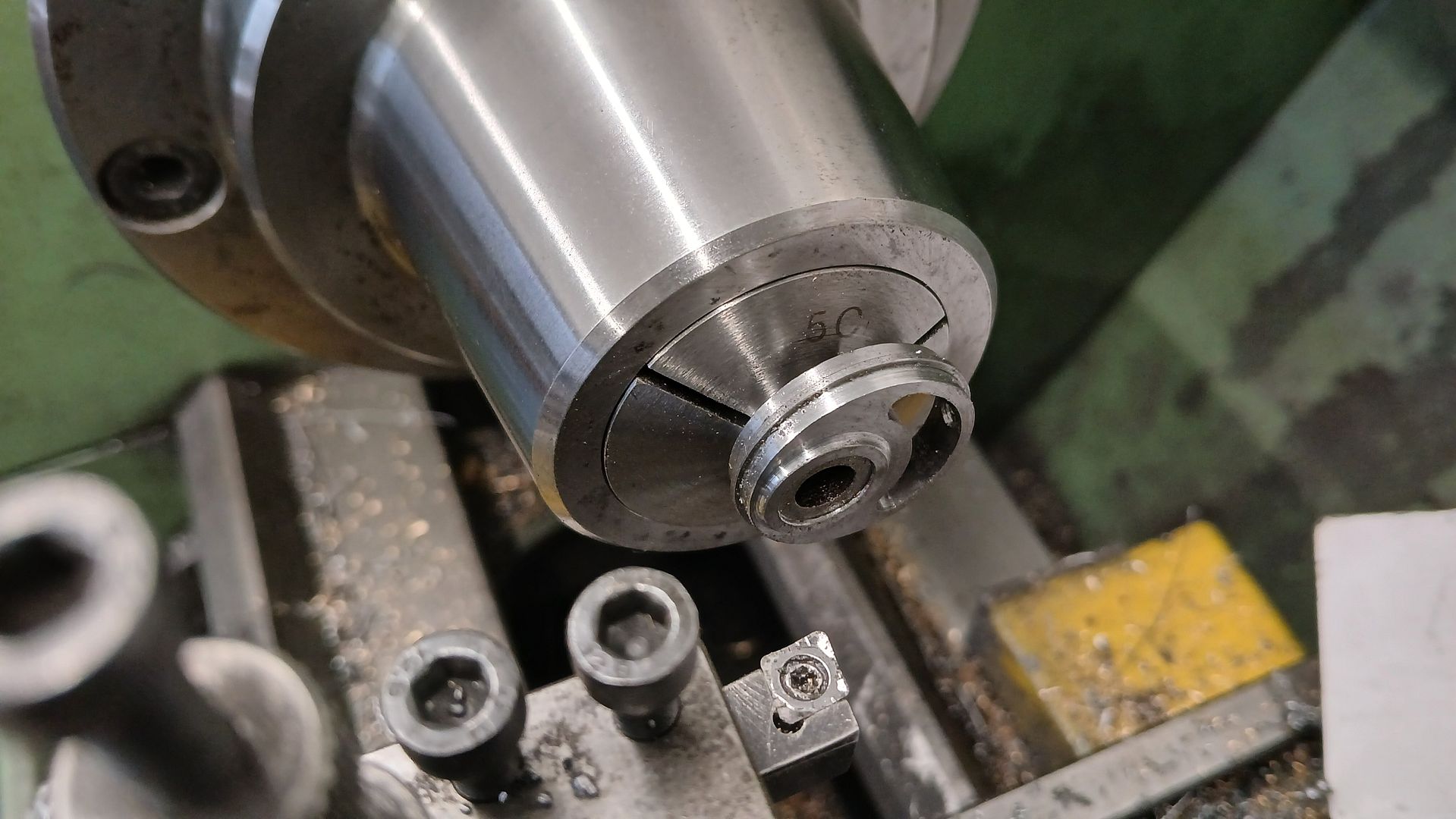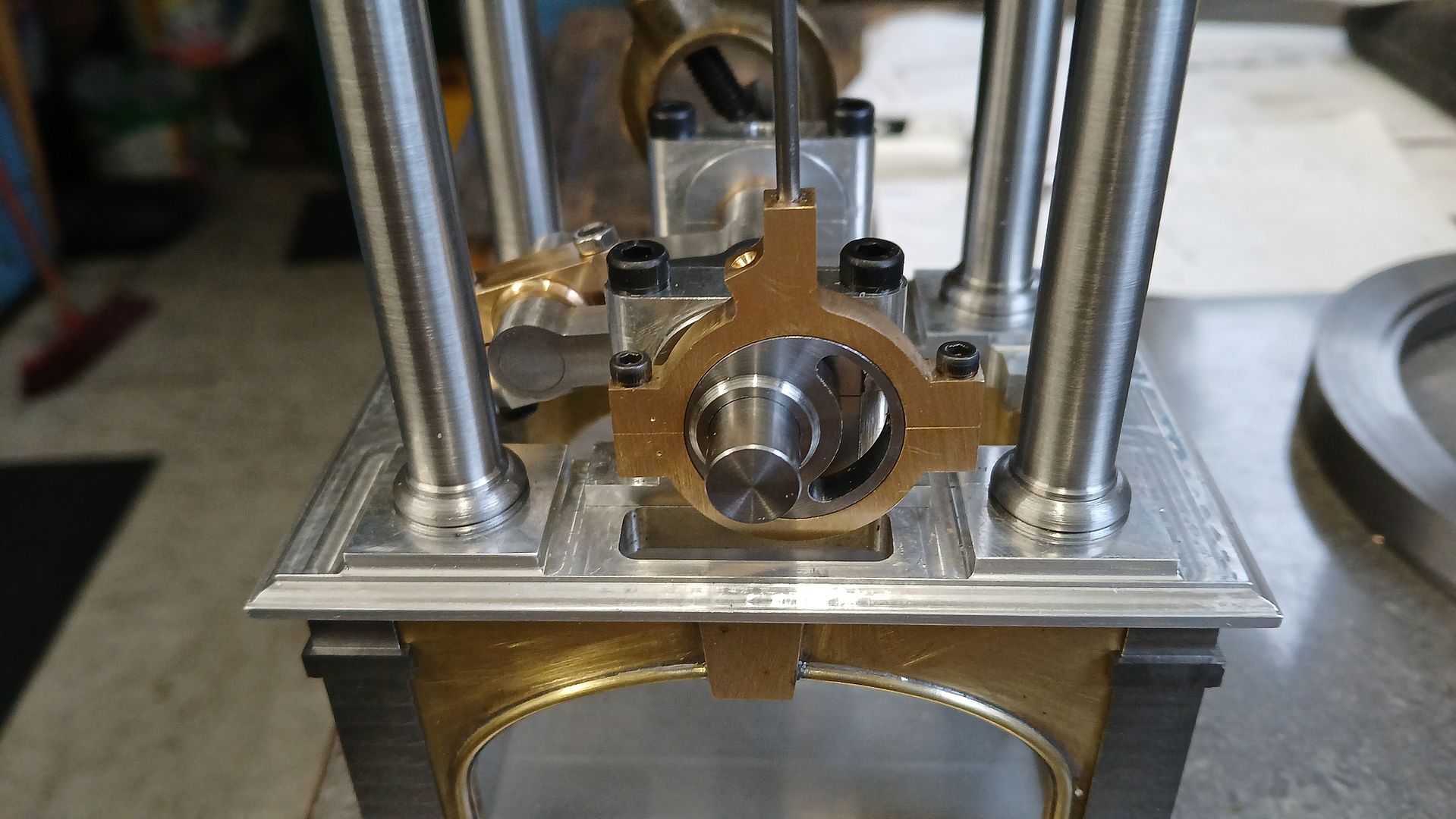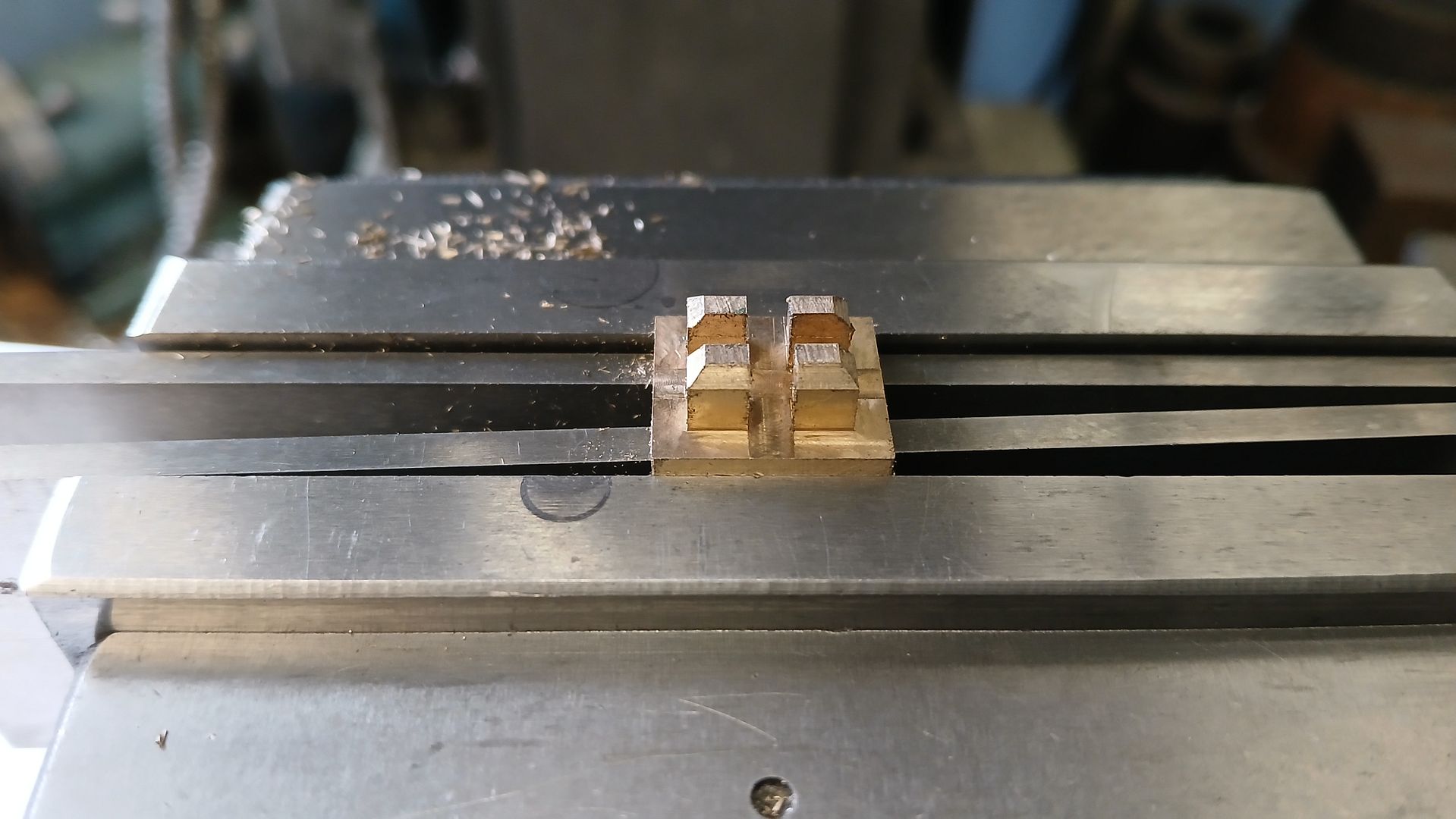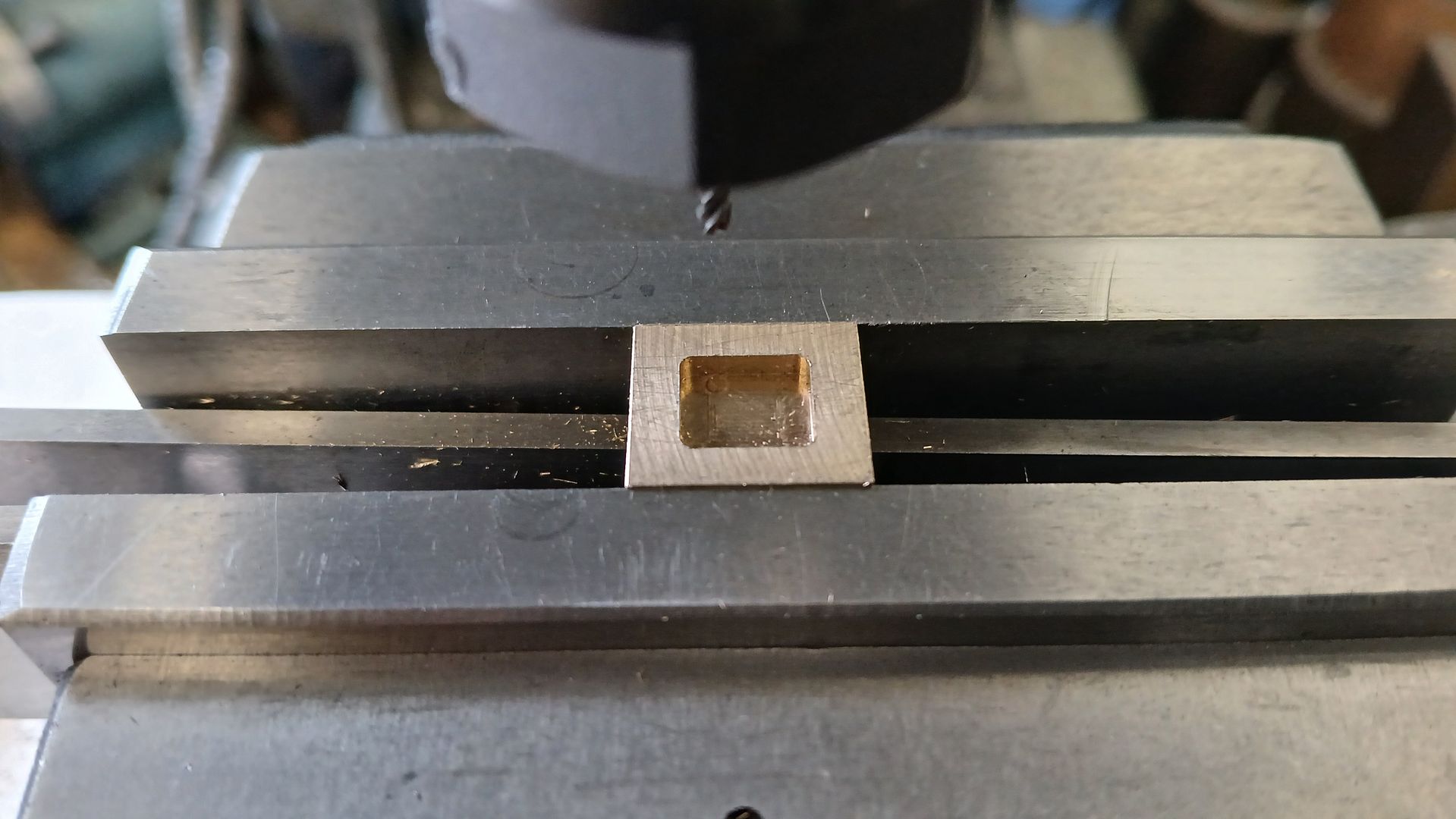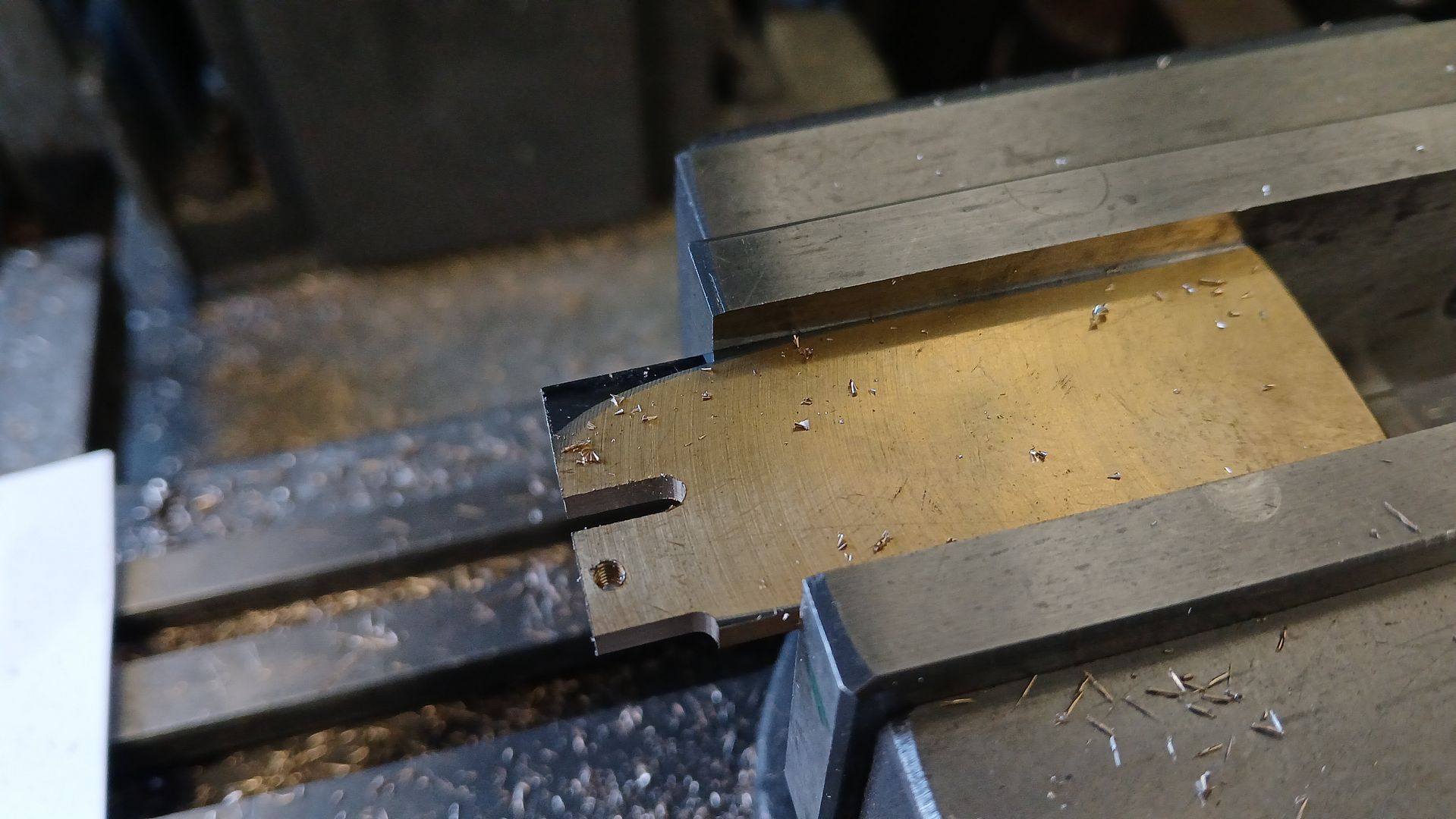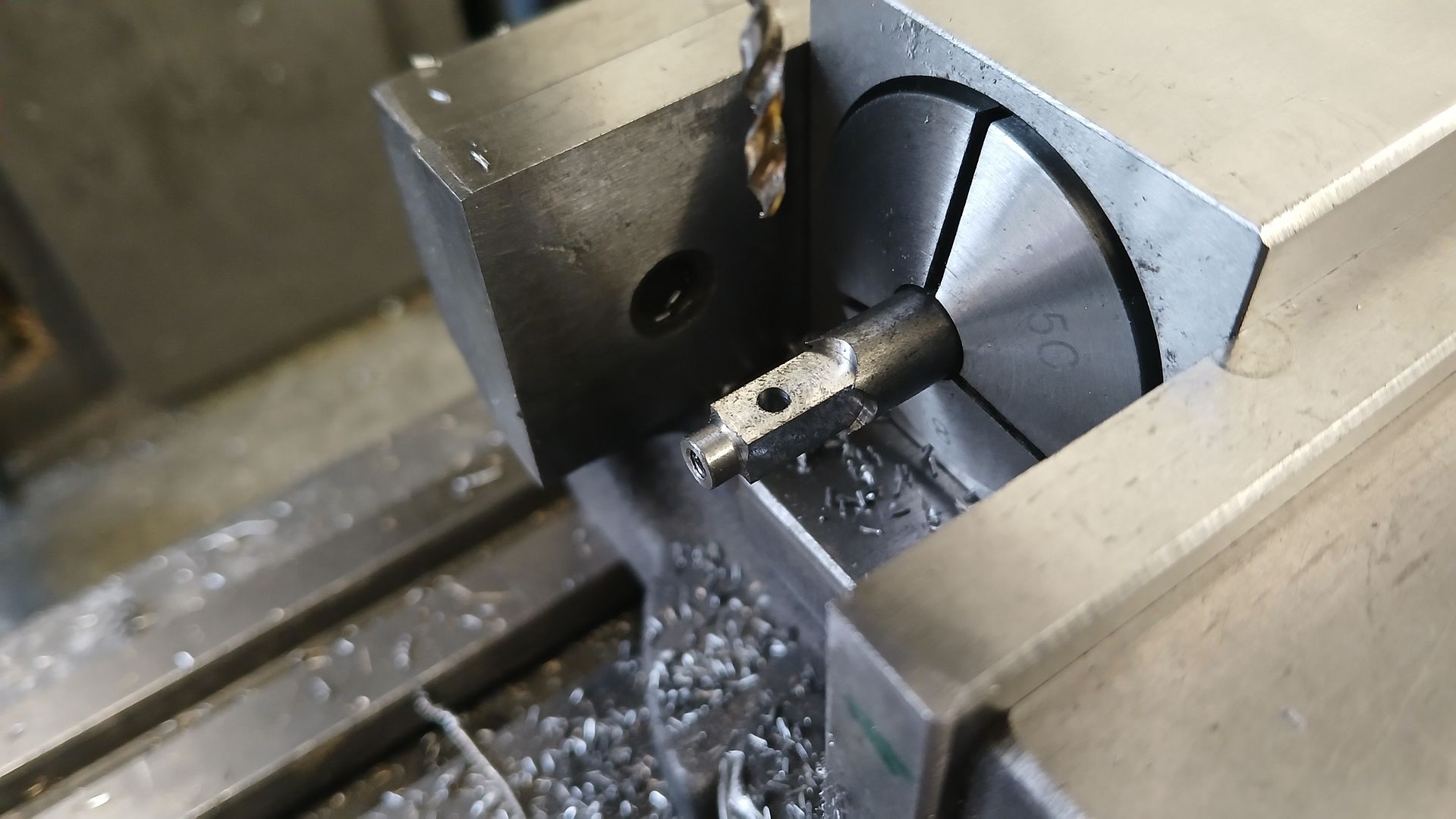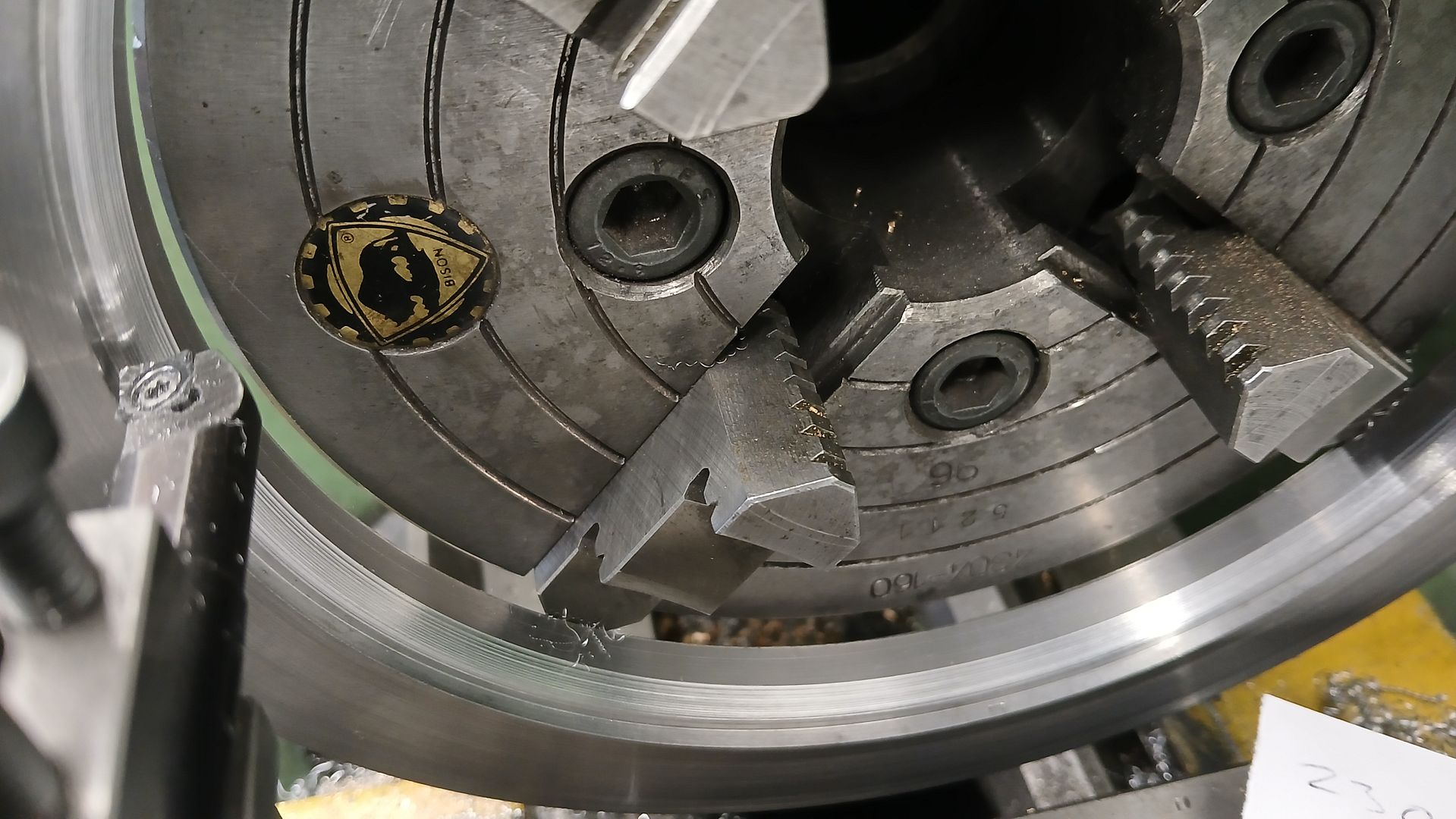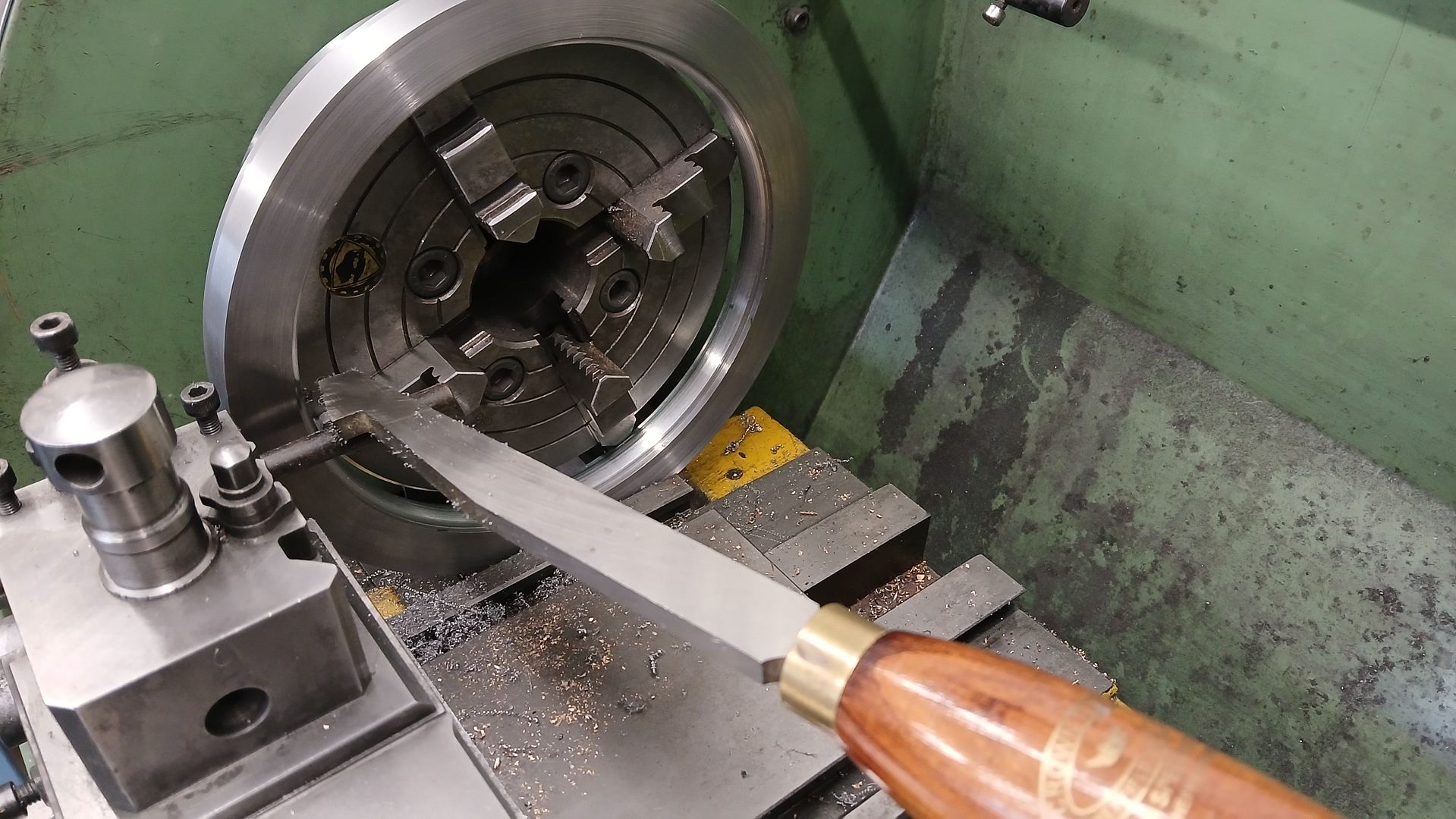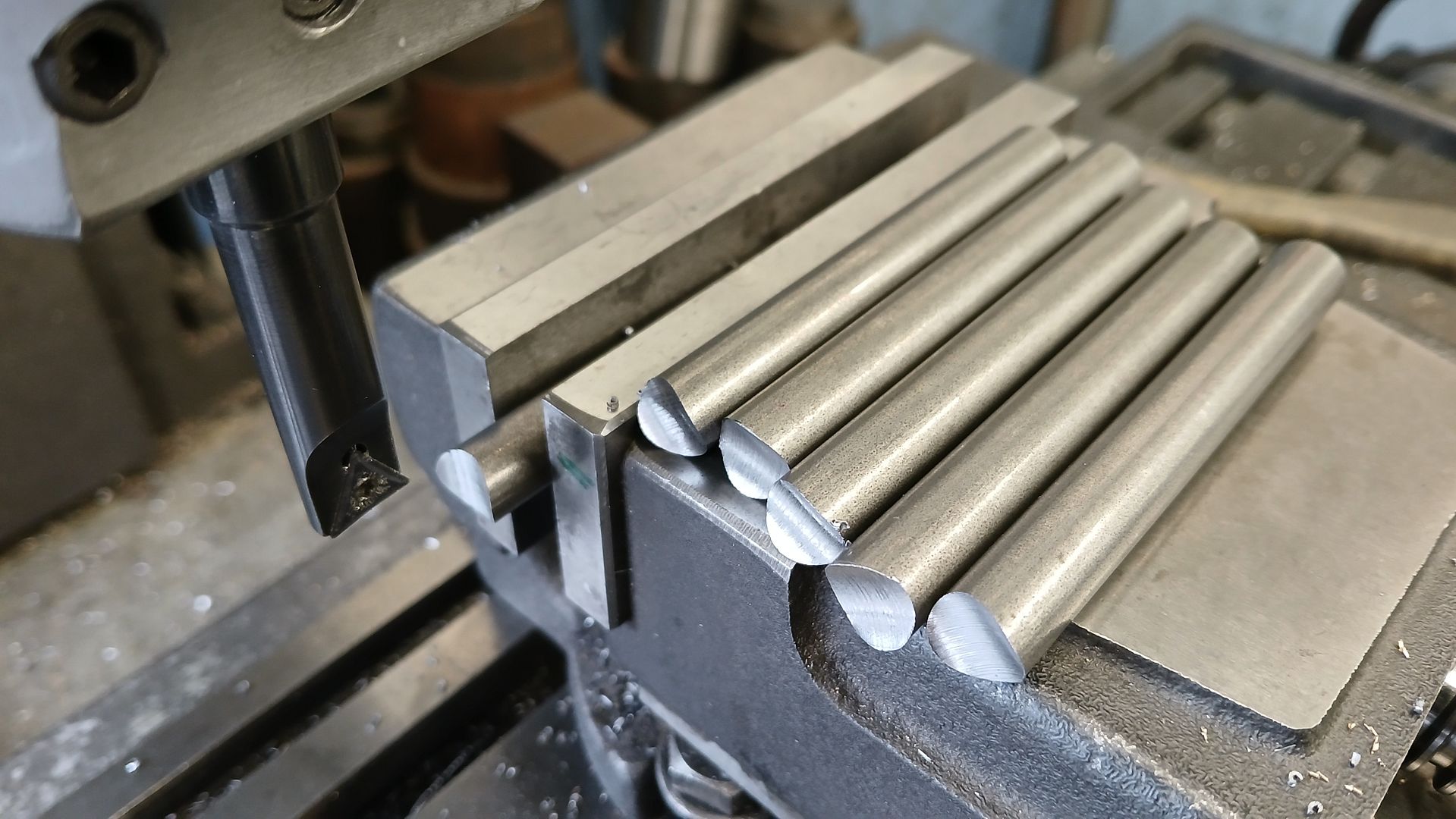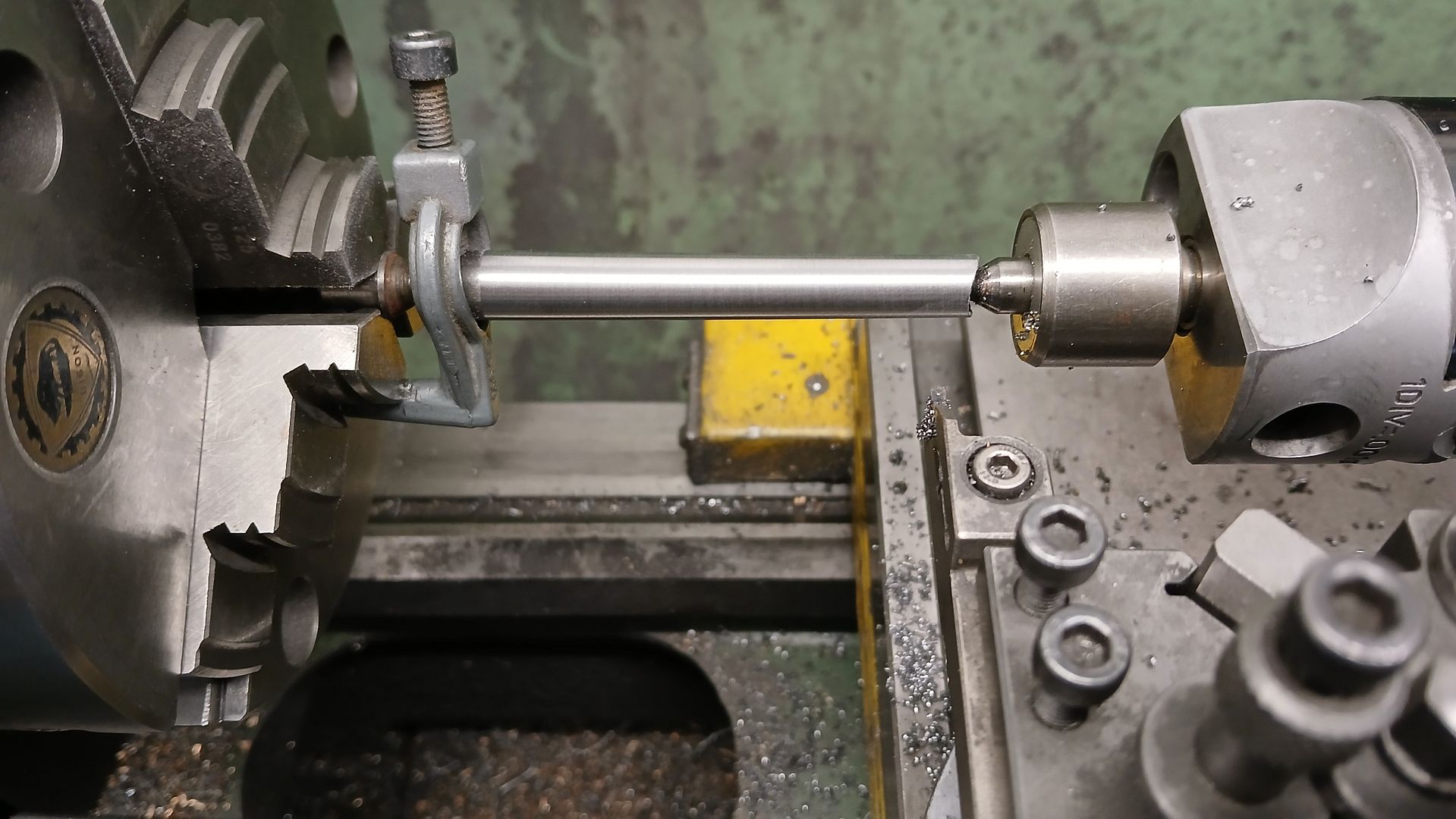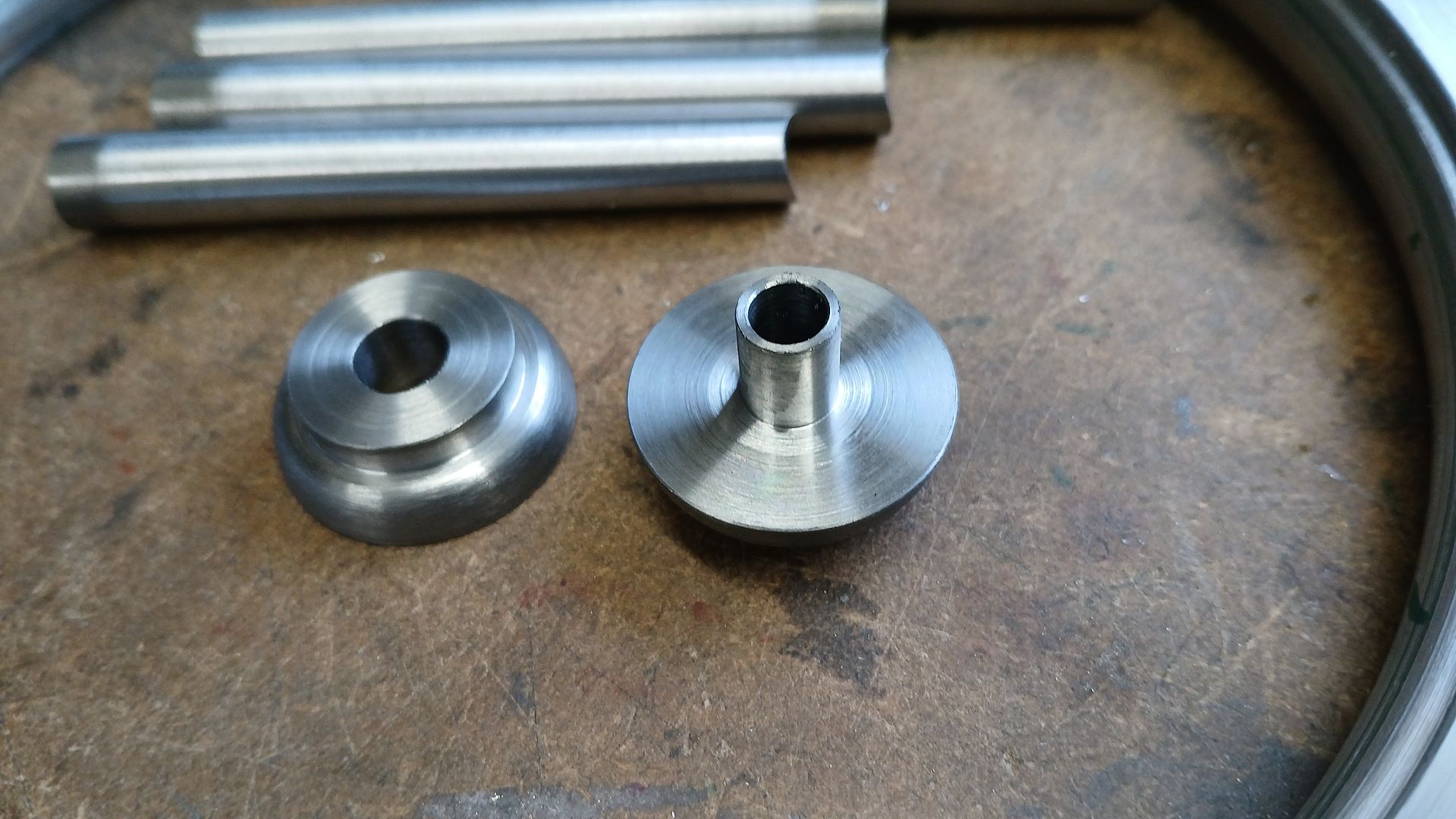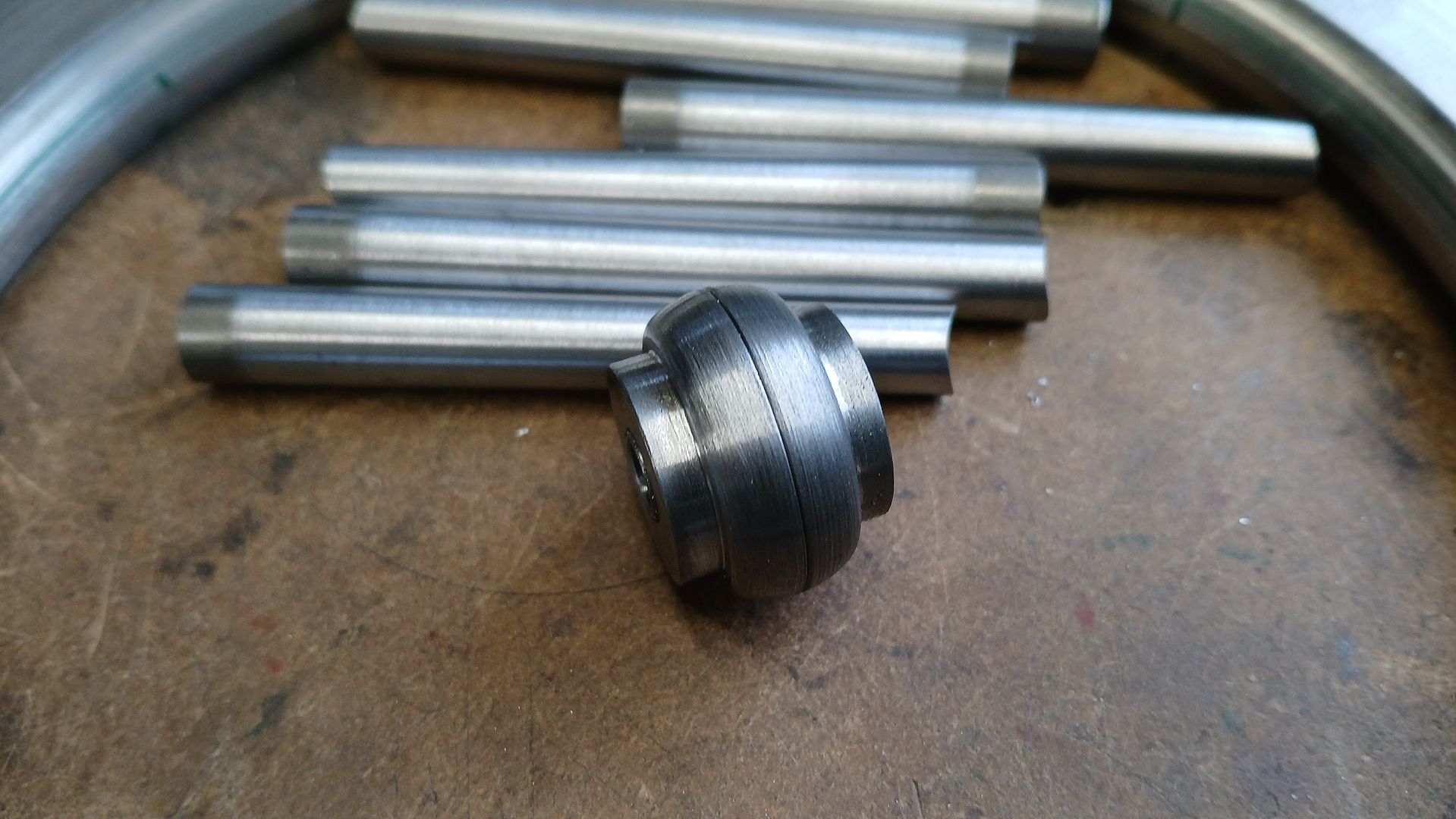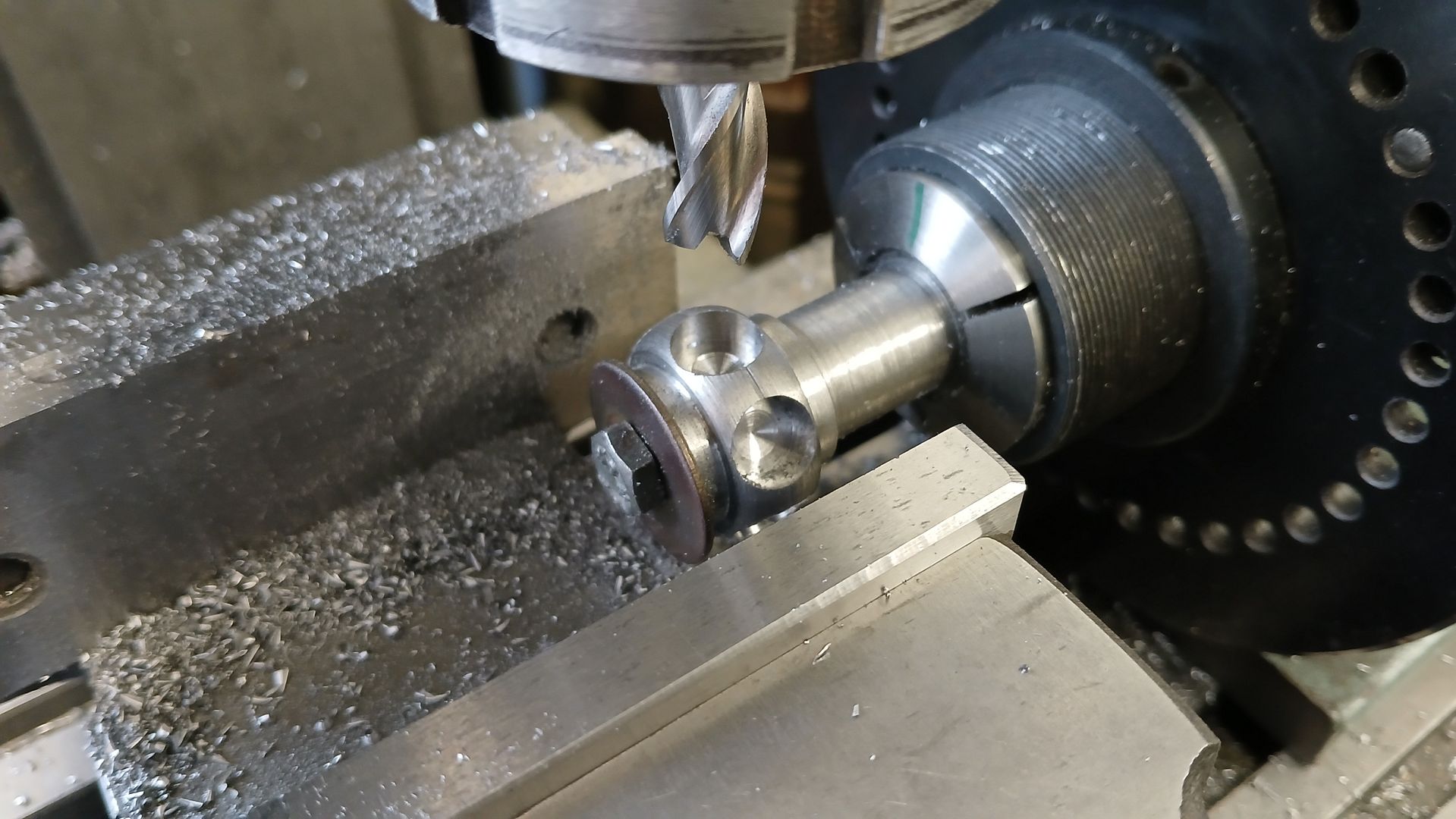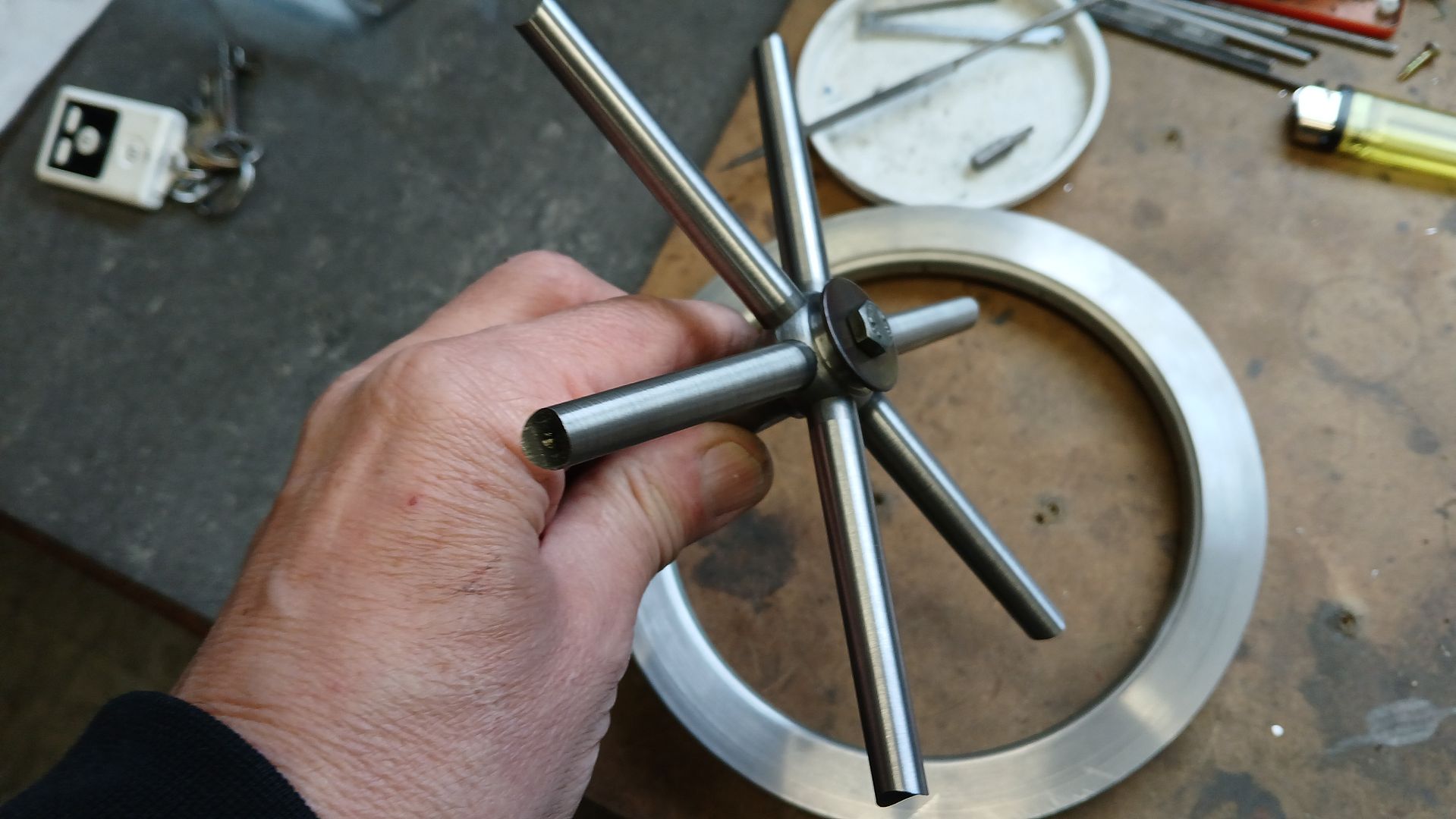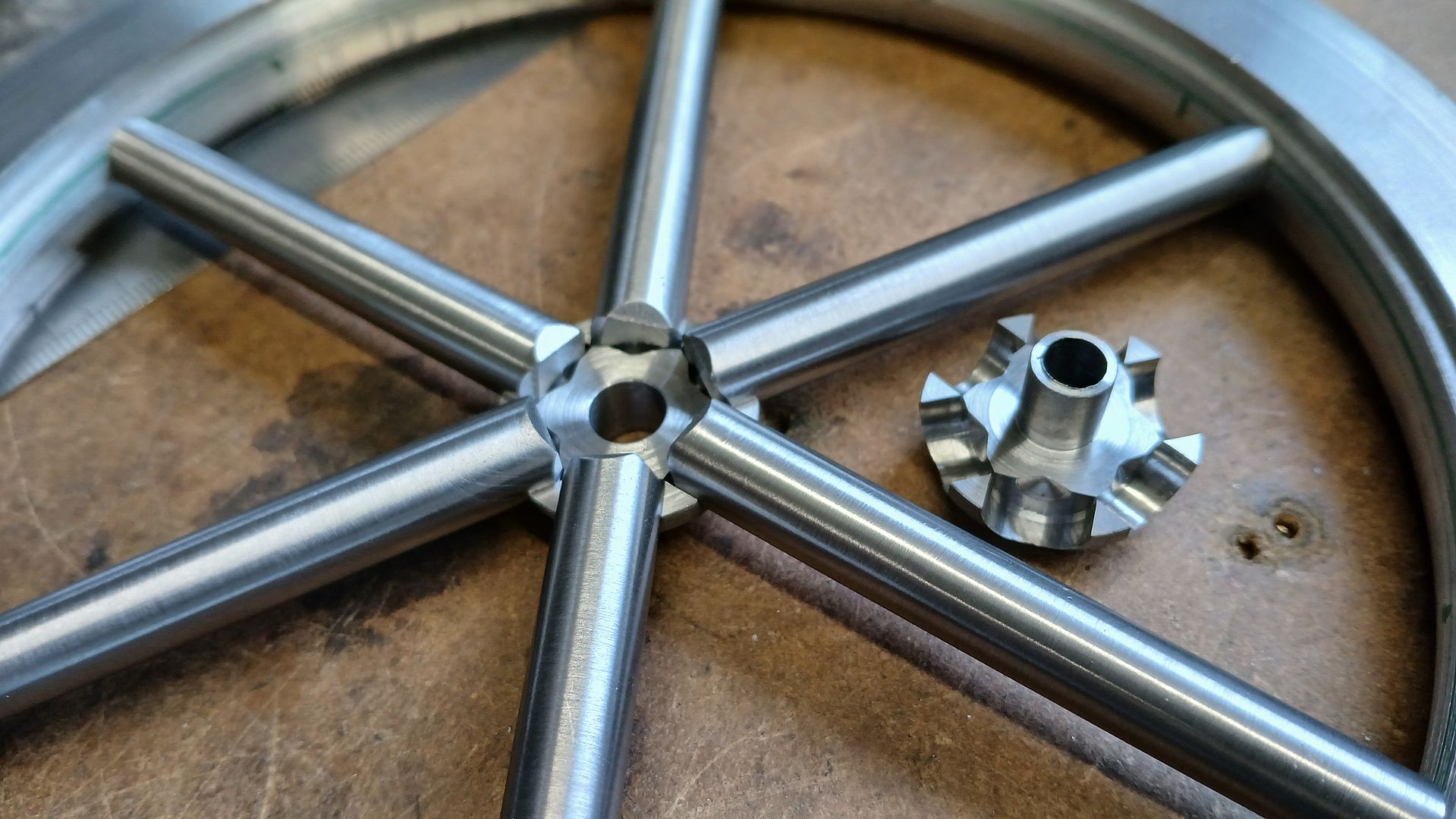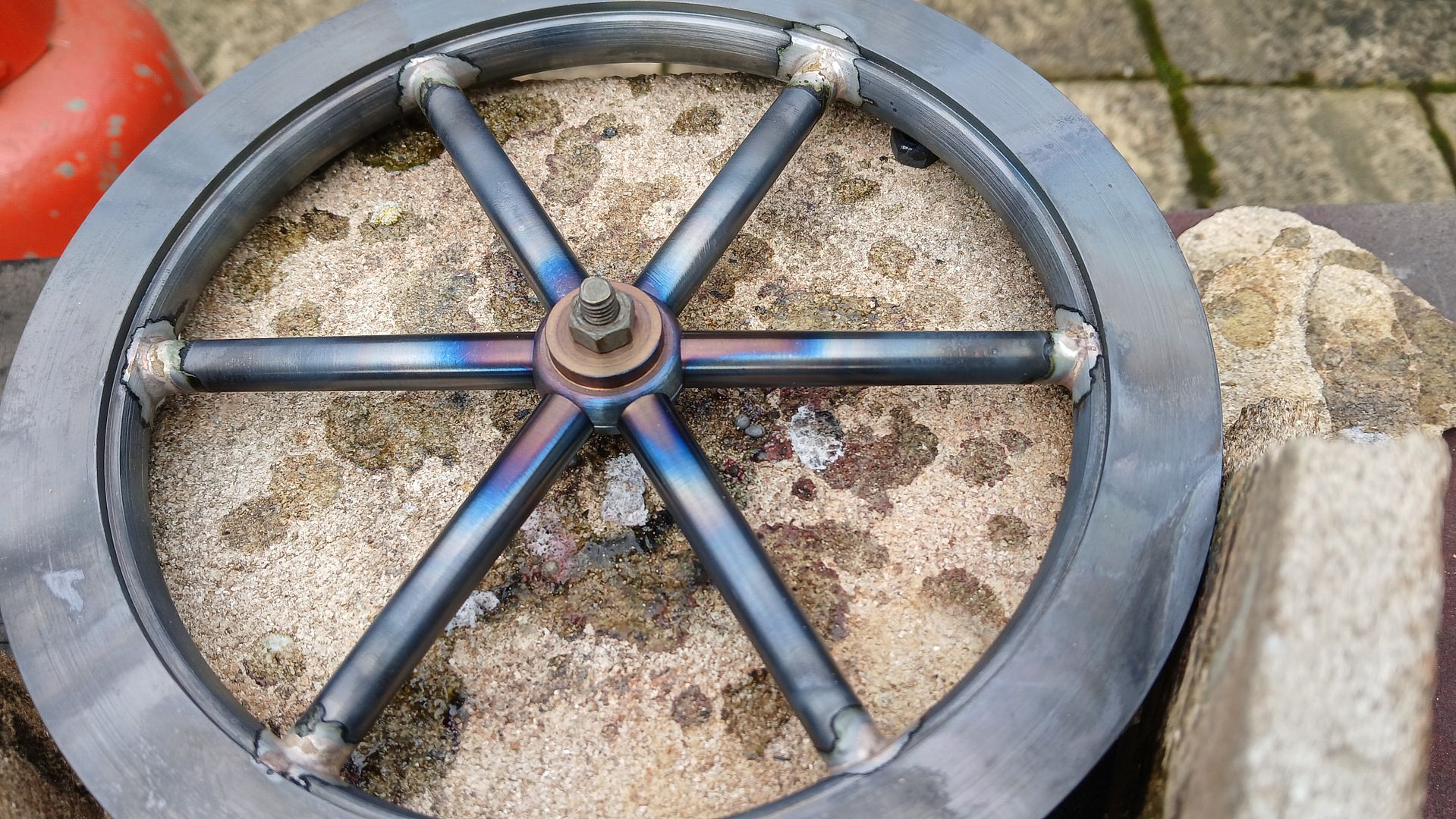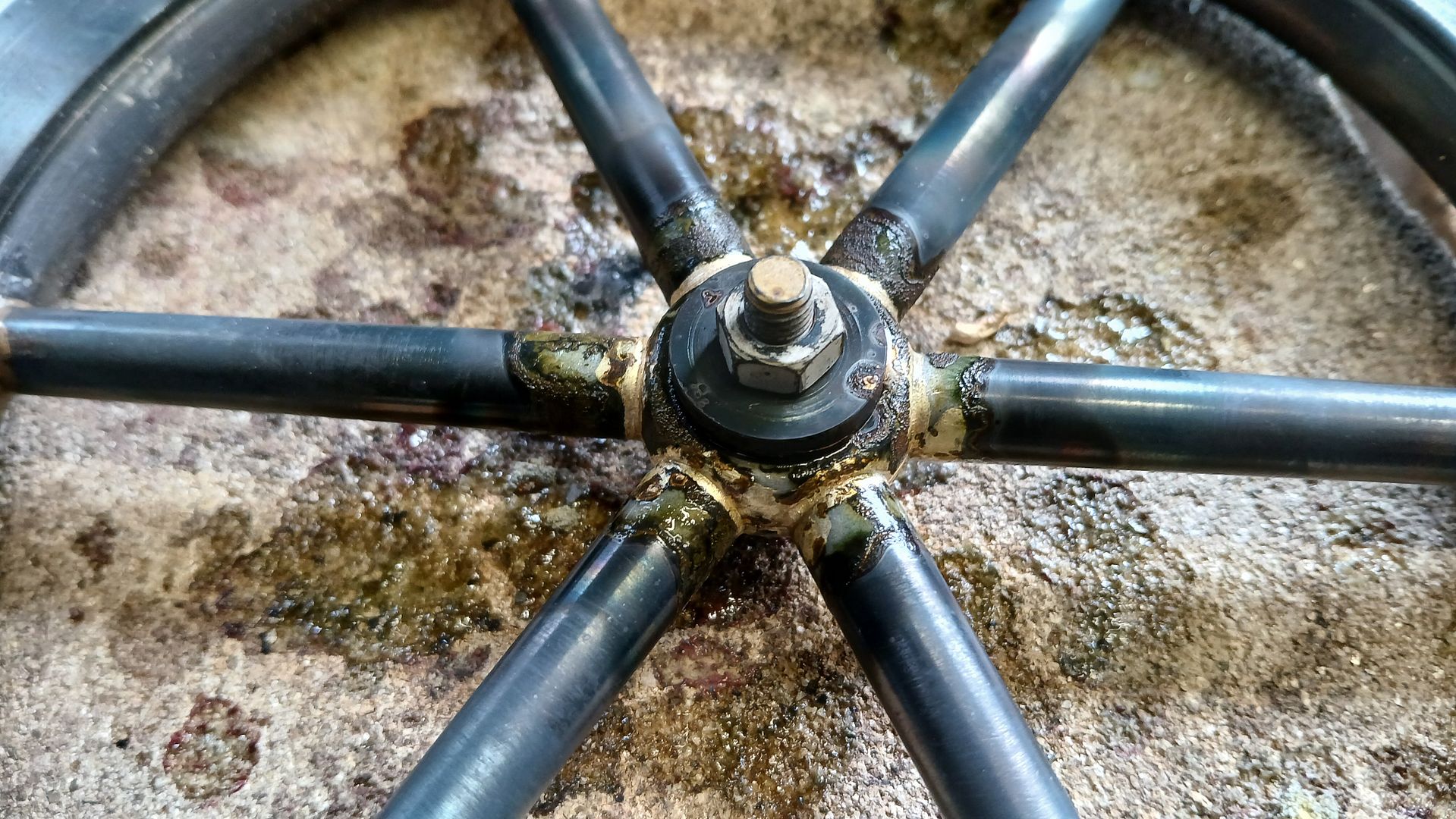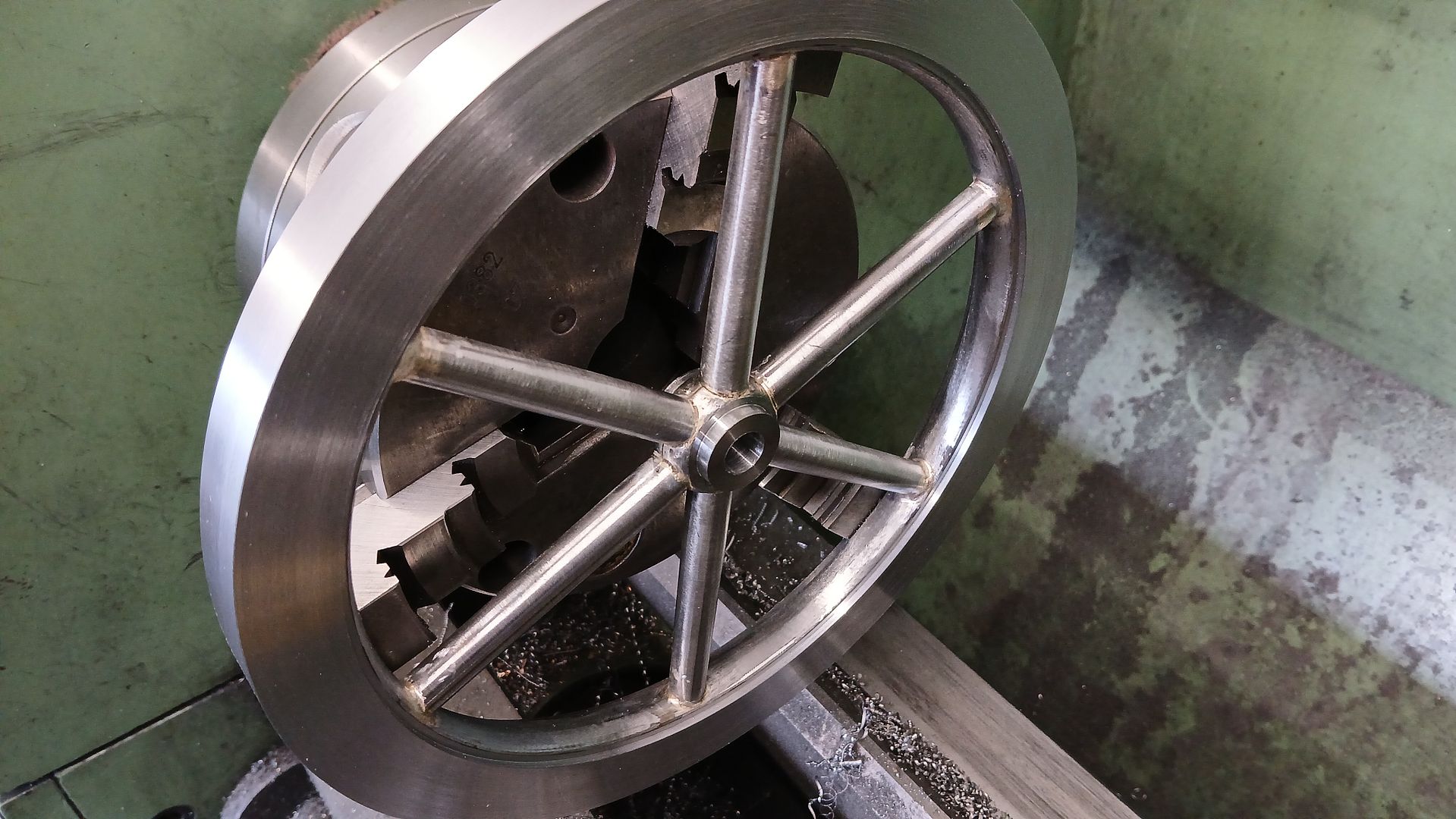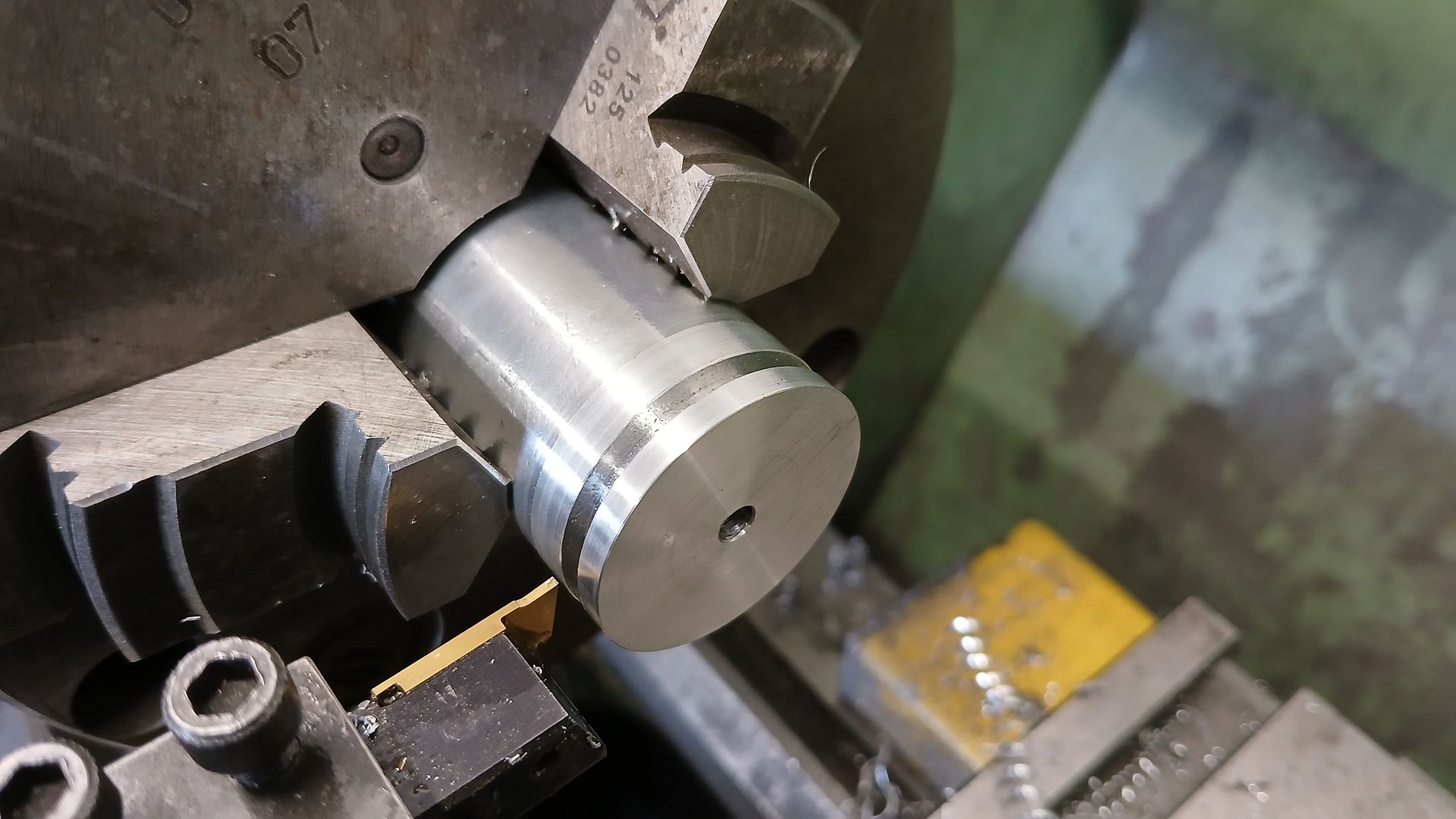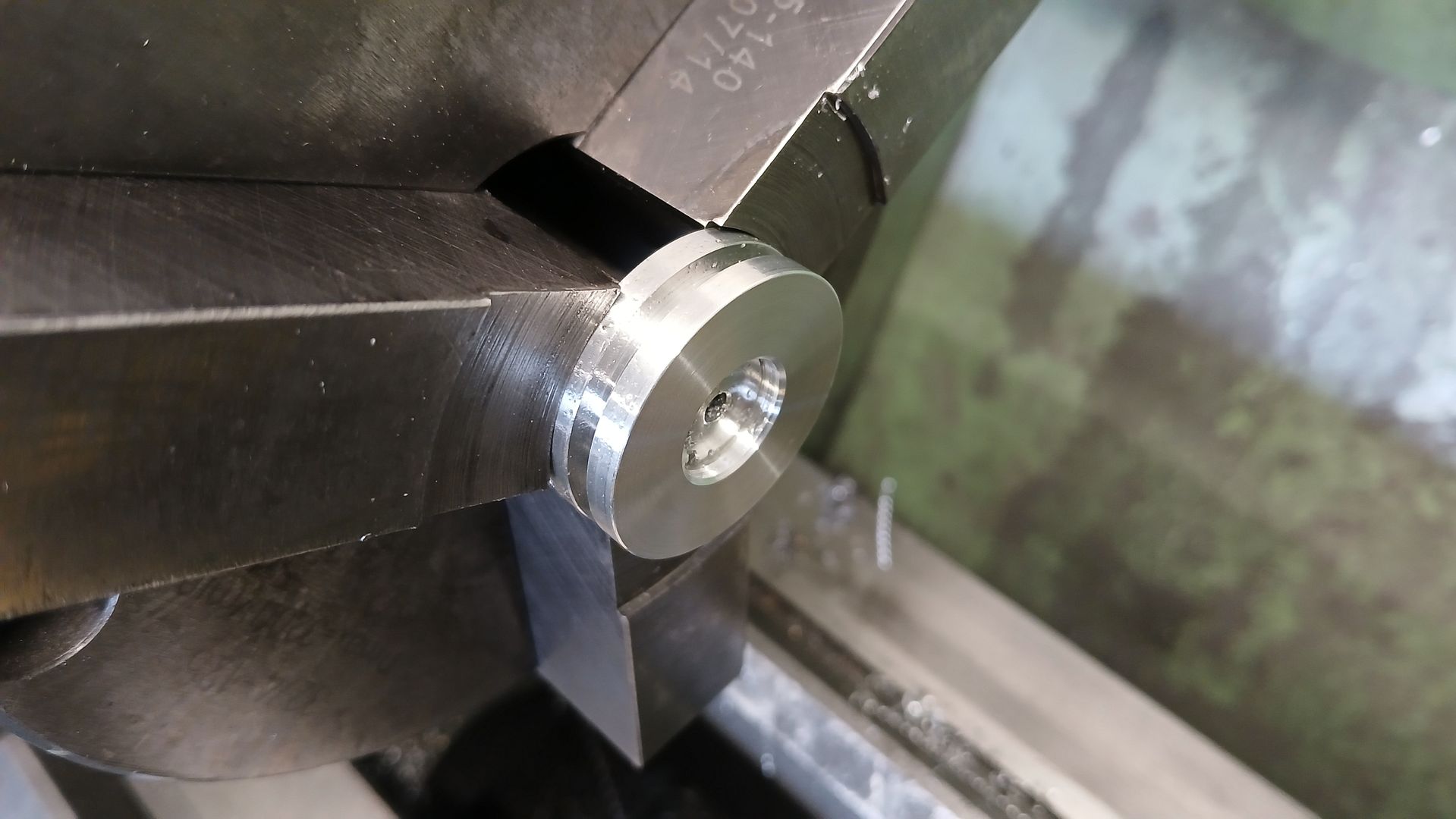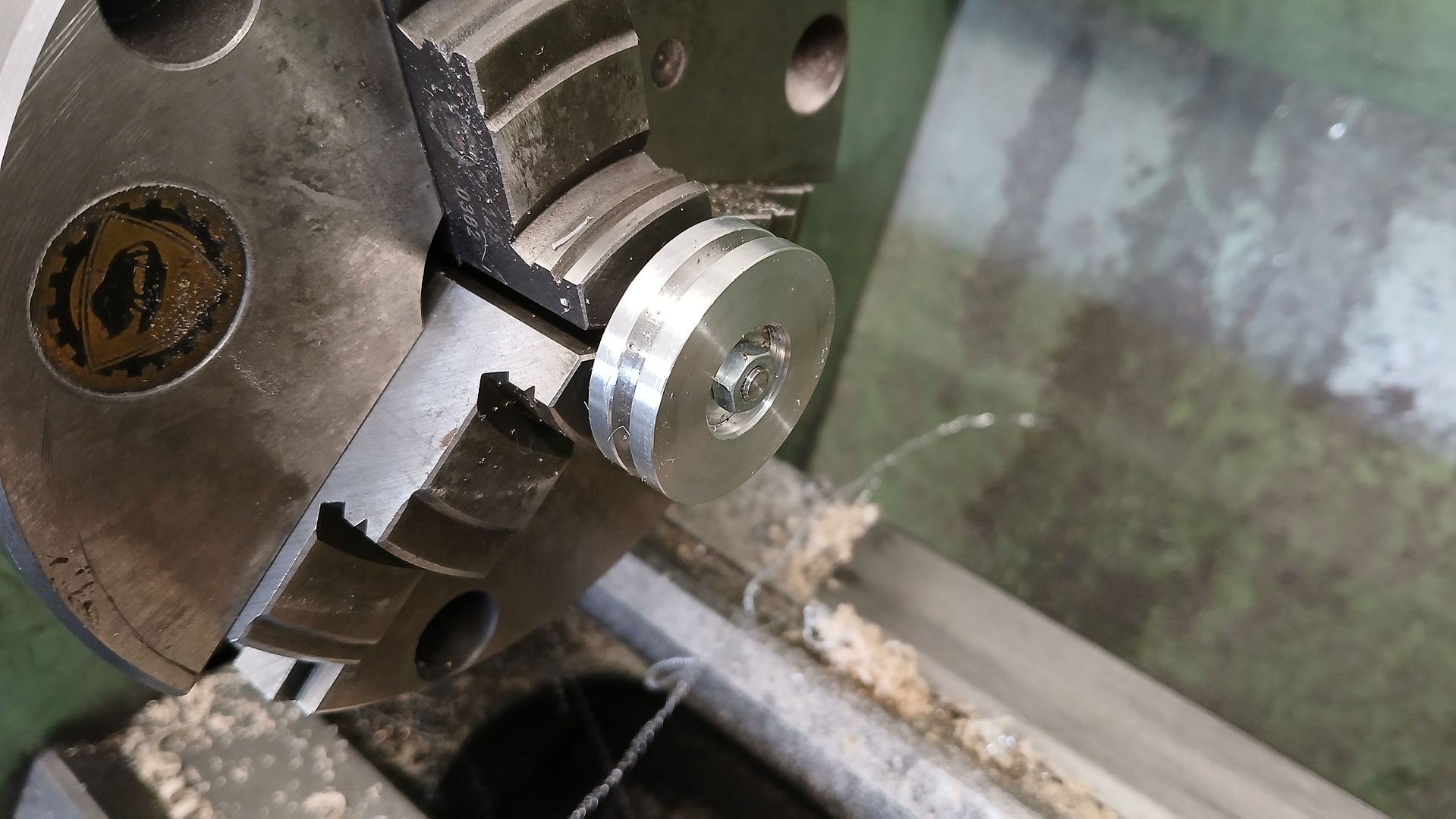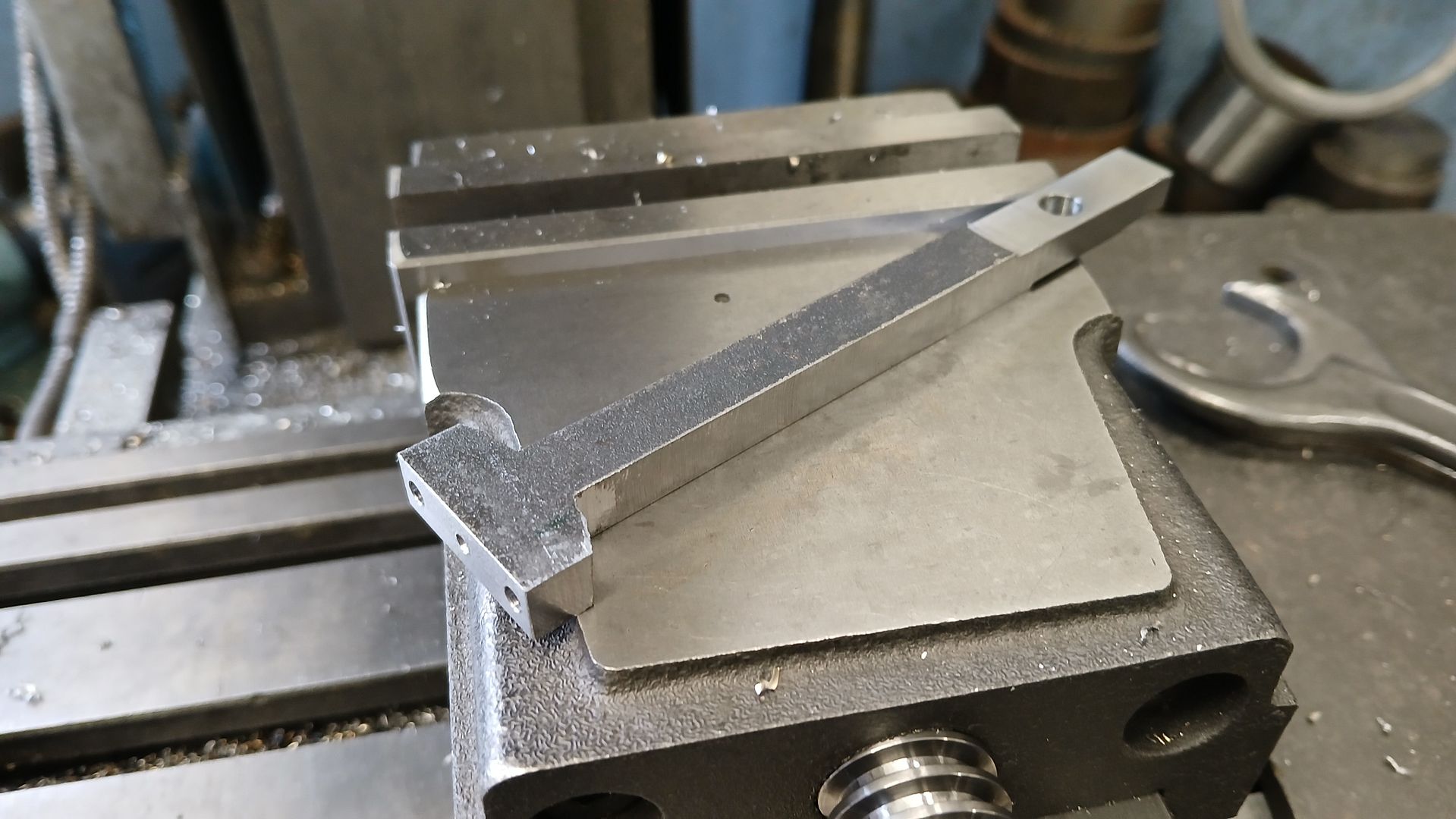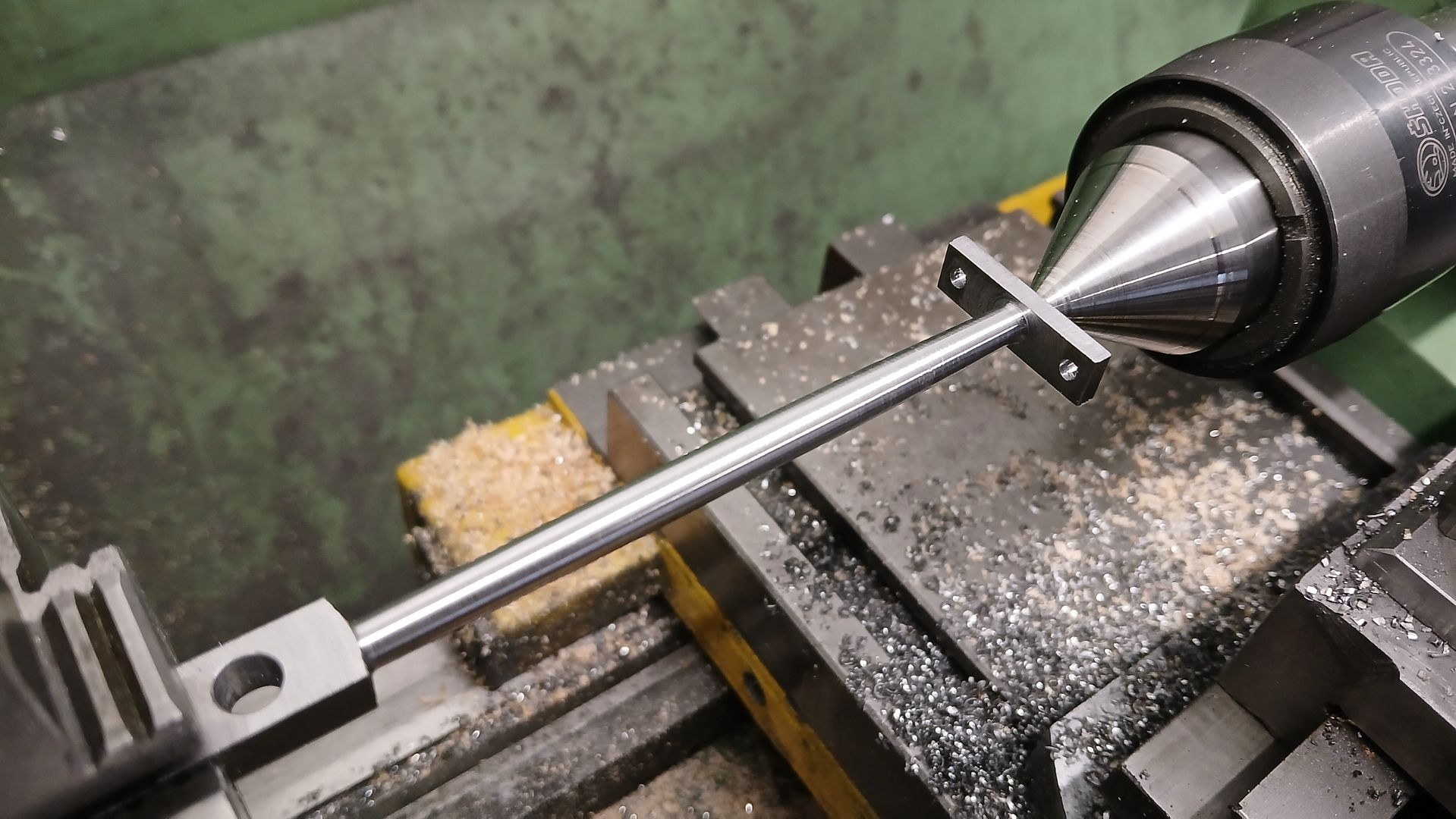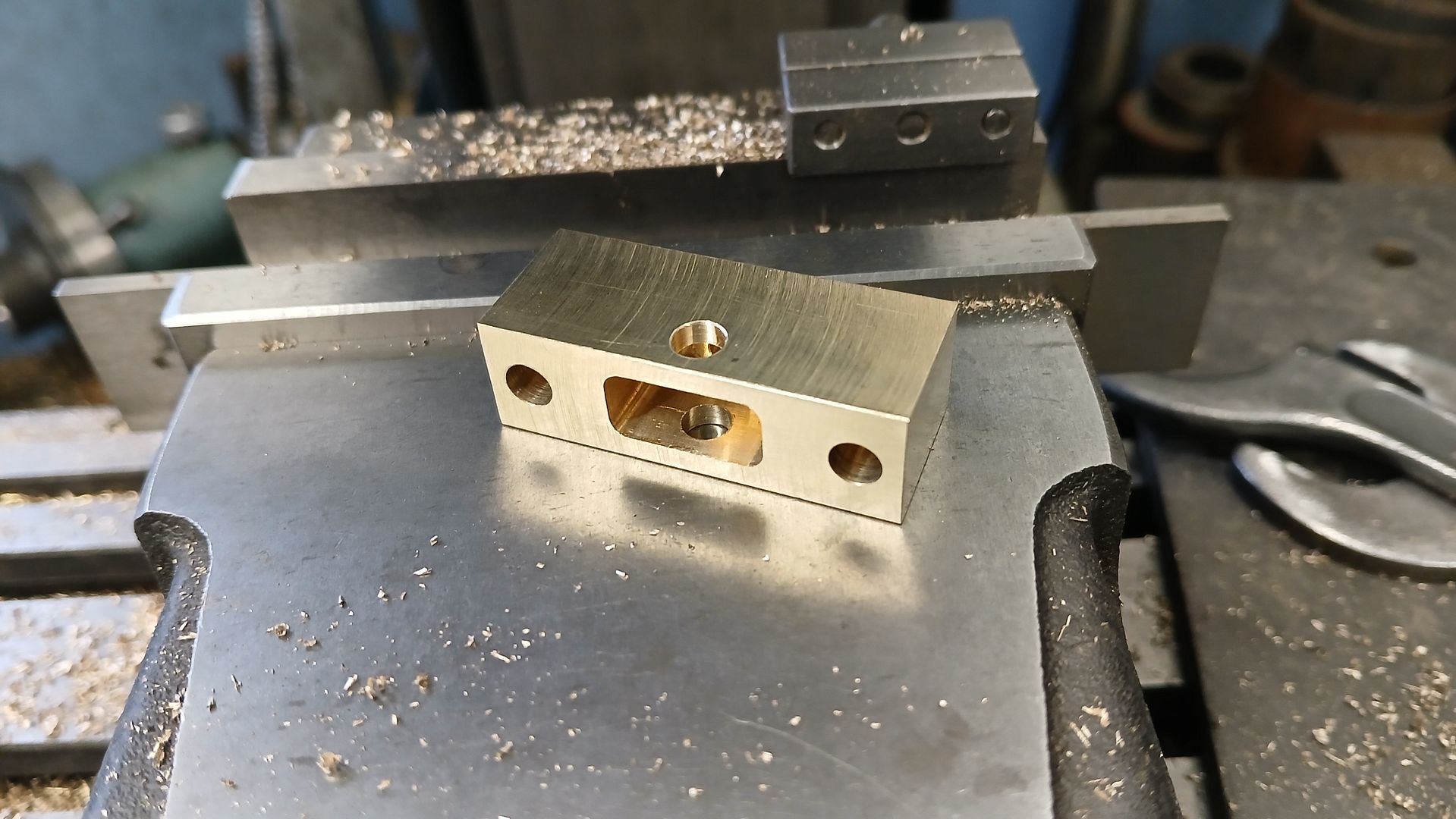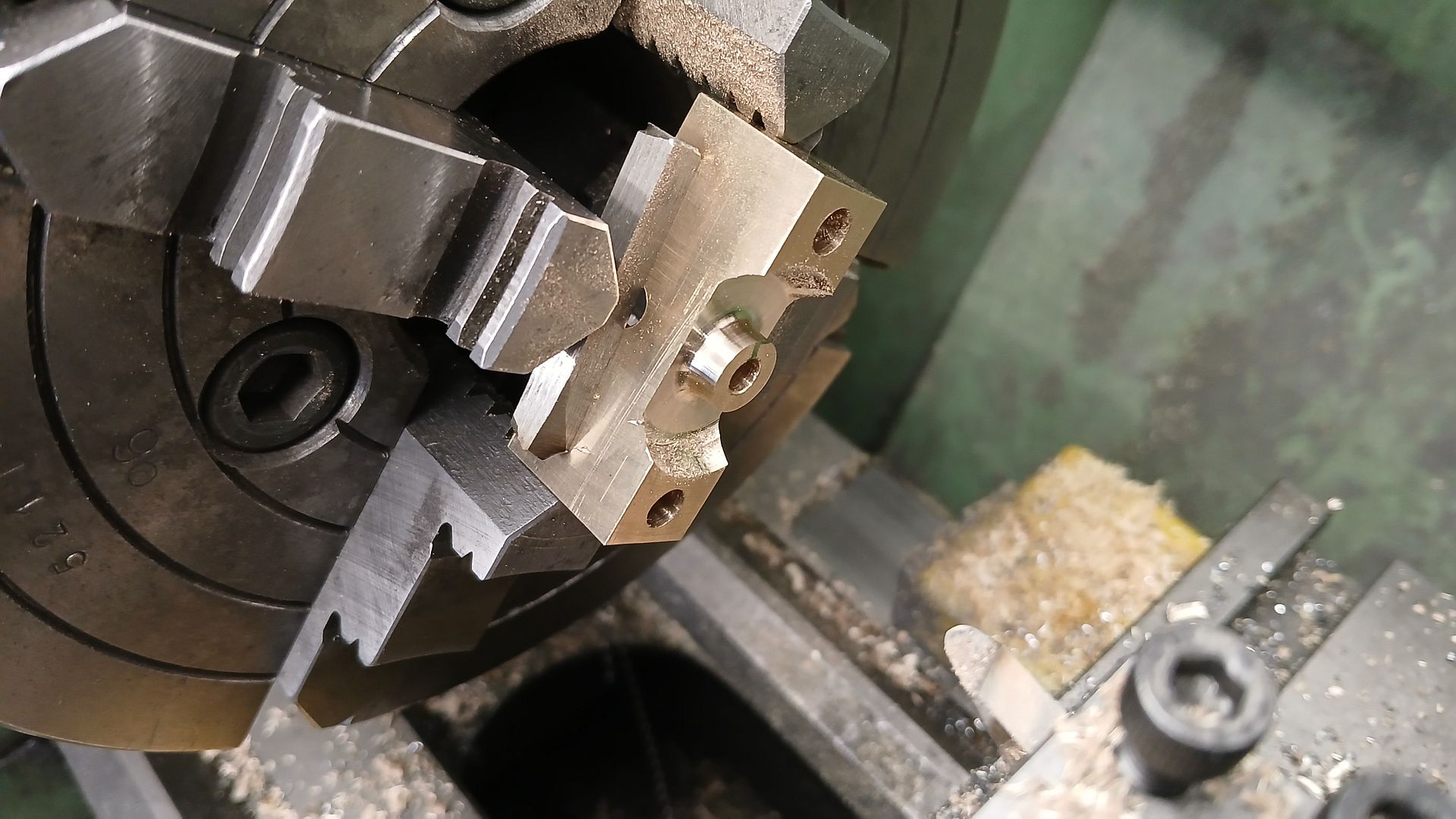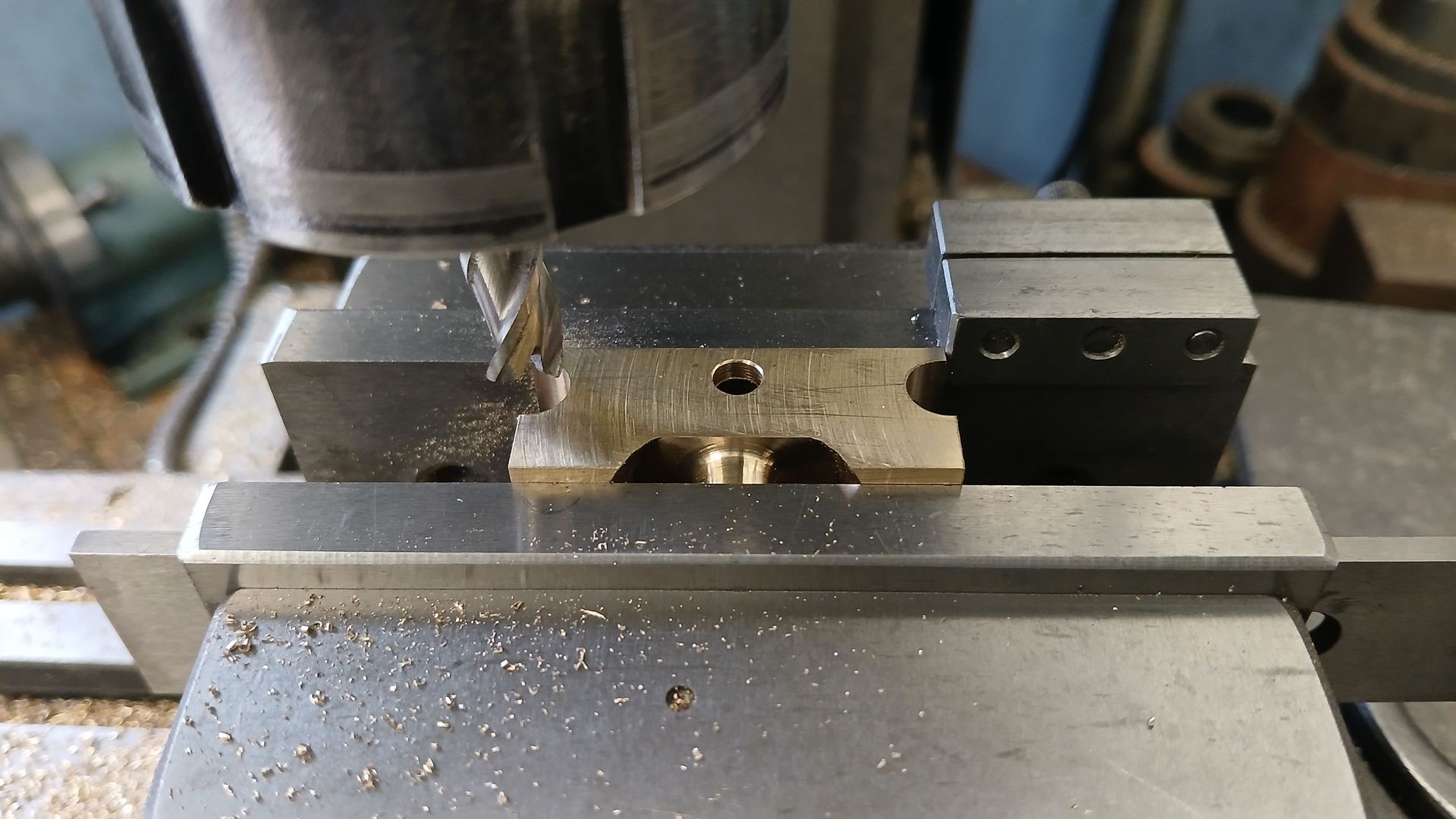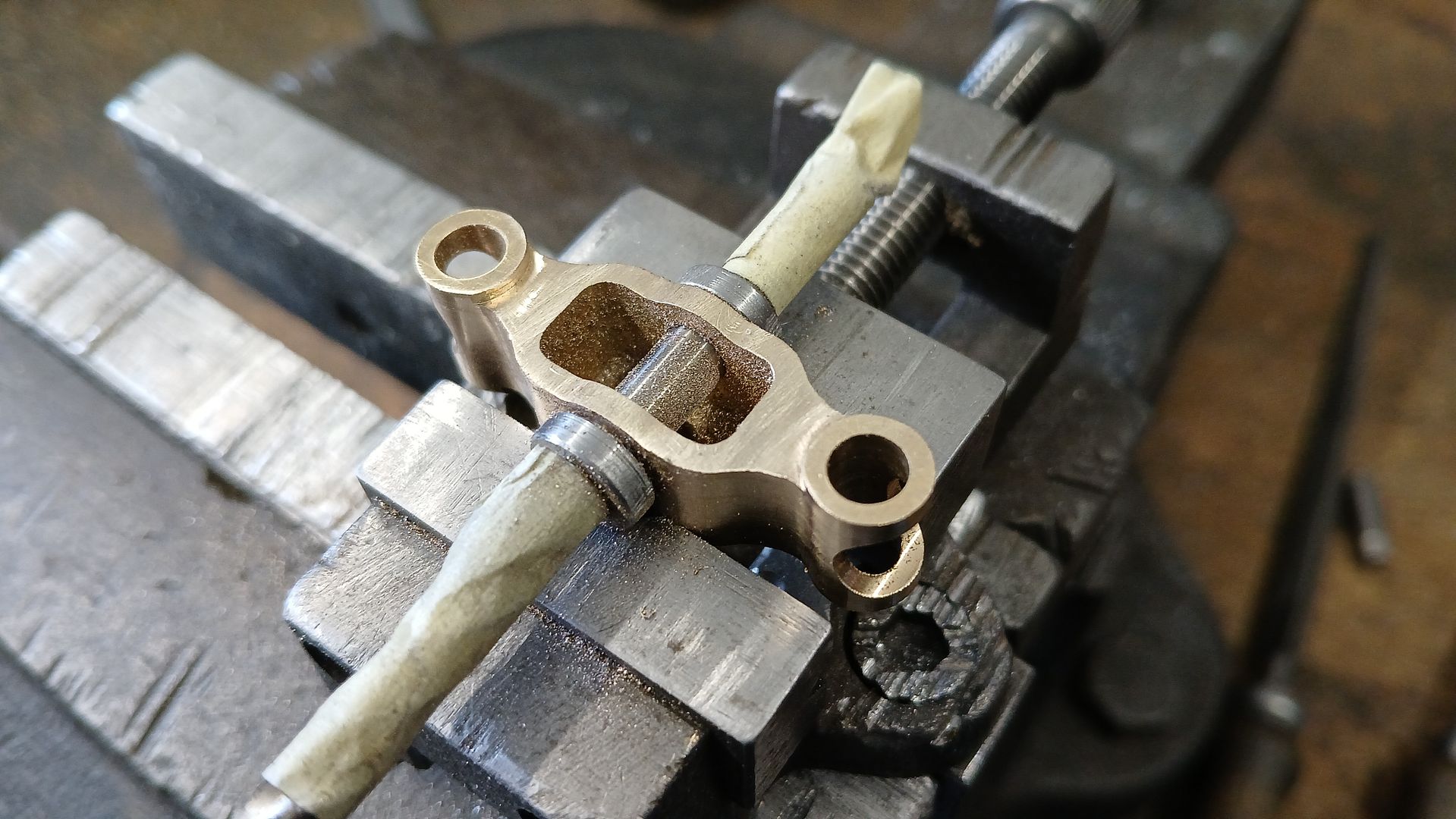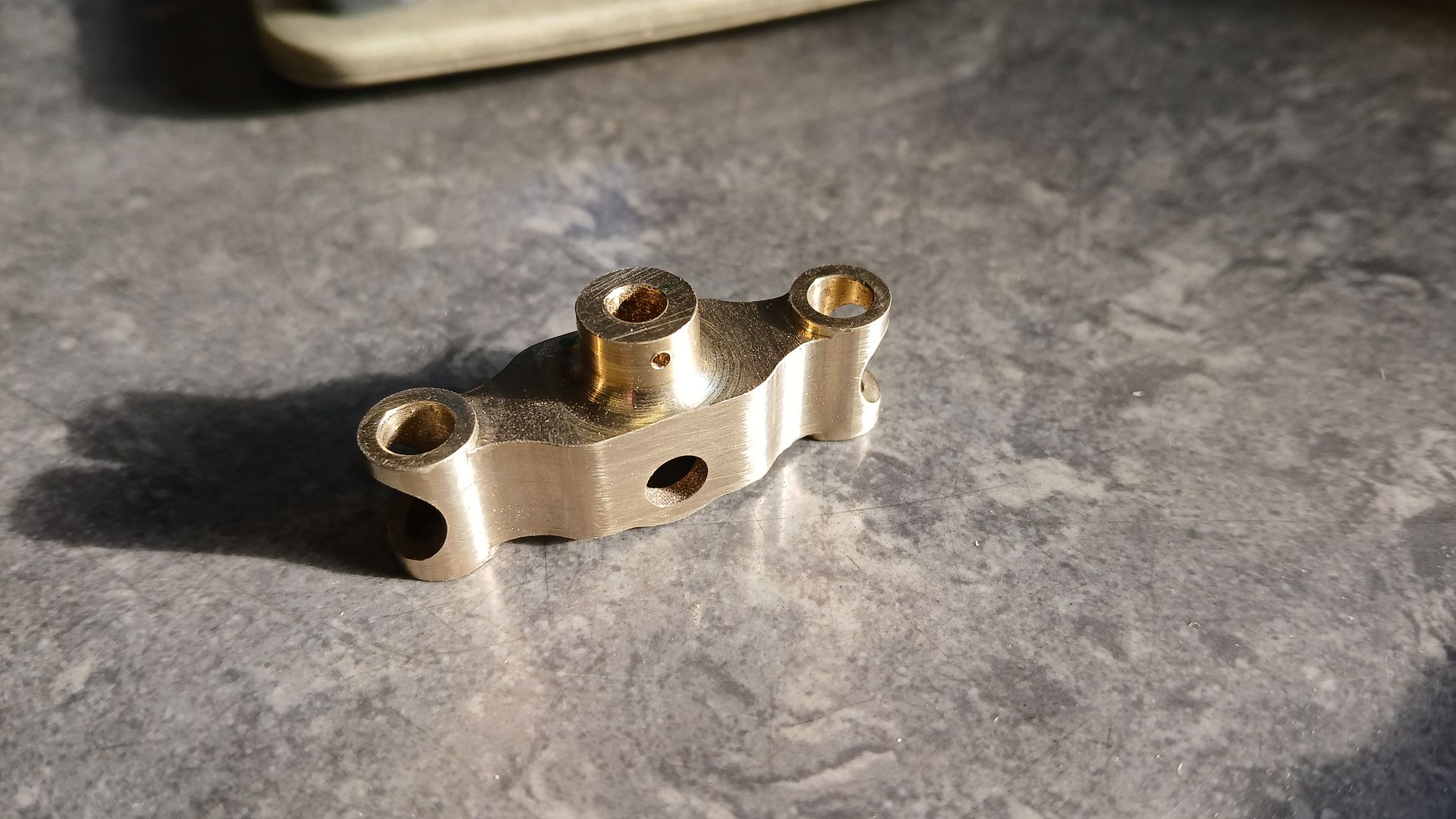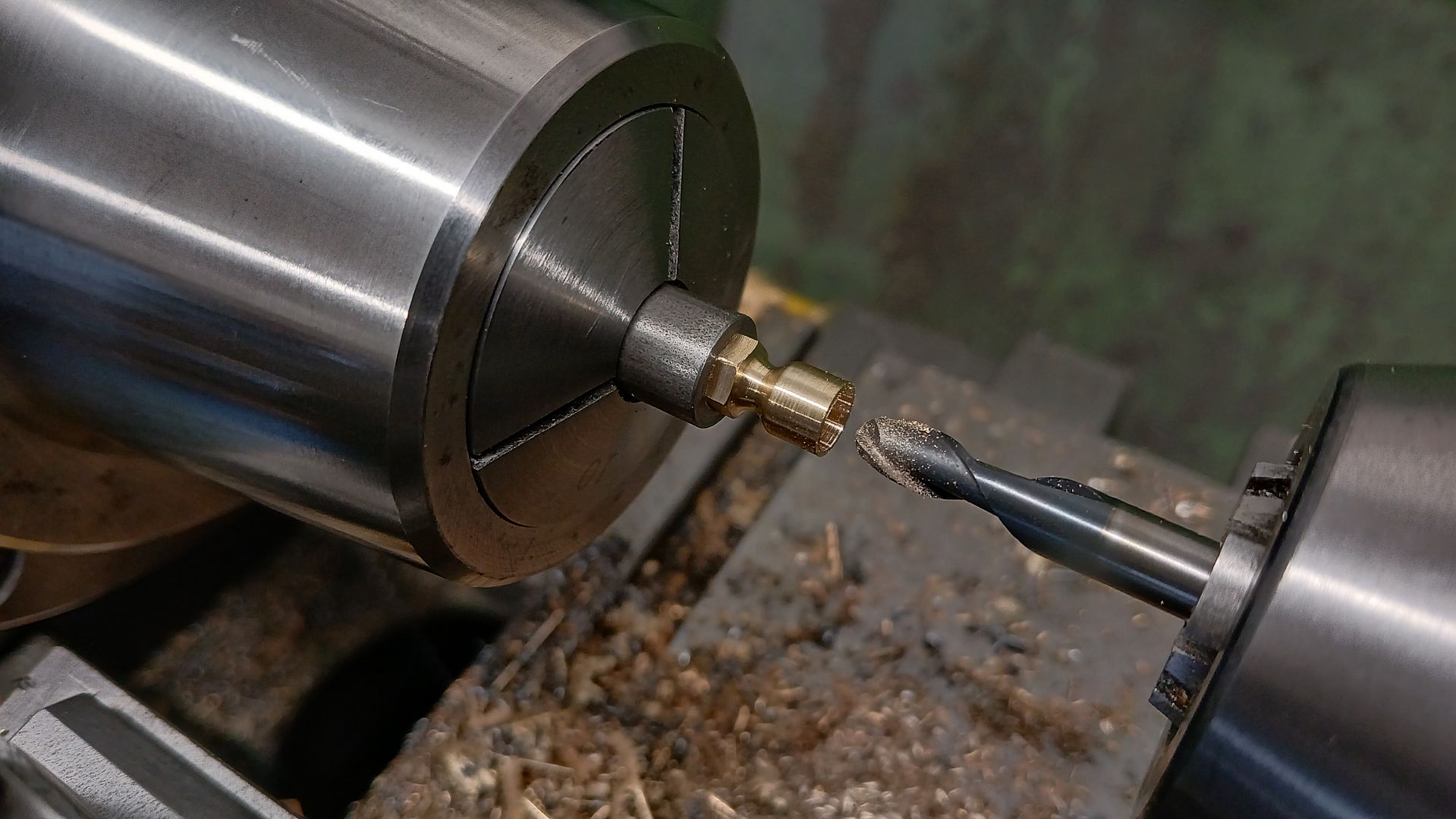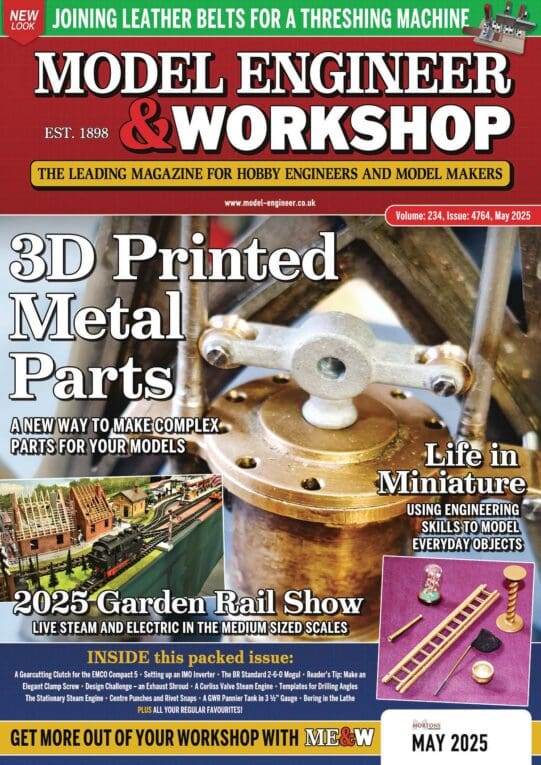Thanks.
With the eccentric and its strap done the next logical part was the valve. Nothing too exciting just the usual rectangular block with a slot for the nut and another at 90degrees for the valve rod and a bit of eight reduction around the sides.

Flip it up the other way and cut the cavity with a 2mm dia cutter

A scrap of 3mm thick brass was found and three sides of the nut machined and the central hole tapped before sawing it off and milling the final edge. I find it easier to do it that way than fiddle with a small piece of material.

The clevis for the valve eccentric rod had the end turned before drilling and tapping M2.5 then over to the spin indexer to square it up and drill the hole. After sawing off and rounding the end a 2.5mm cutter formed the slot.

No photos of the valve rod but it was just a piece of stainless steel threaded M2.5 at one end for the nut and a small 1.5mm dia x 1mm long spigot turned on the other. This spigot located in a hole drilled in the edge of the “eye” to hold it in place while the two were silver soldered together. A small guide bush in the entablature stops the rod being pushed sideways by the action of the eccentric rod.

I had designed and scaled the engine to suit the generic Stuart 7″ casting but decided to make my own as it keeps me out of mischief for a bit longer than just machining another cast flywheel would. As with several other engines, I started with some 203mm OD x 25mm thick wall steel tube leaving the diameter and width a bit oversize. The profile of the inner edge was done with a series of co-ordinate cuts using a 0.8mm tip radius insert in a boring bar – 22 cuts from each side. You can see the contours of these cuts best just below the boring bar.

With a piece of round bar in the toolpost to act as a tool rest a woodworking HSS scraper was used to take the tops off the contours and blend them into a smooth profile.

The 10mm bar for the spokes had a suitable concave curve cut on the end to sit closely against the profile of the rim.

Then after ctr drilling both ends the boring head was used to offset a small rotating ctr and the spokes were tapered.

The two halves of the hub were profiled in a similar way to the rim, a spigot on one locates the other and a 6mm hole allows them to be bolted together.


I then drilled 6 holes with a 6mm drill followed by plunging with a 10mm 3-flute cutter to form pockets for the other end of the spokes to locate into.

Quite a nice push fit into the holes and no spokes falling out which will mean no jigs needed for the next steps

The spokes were then machined to final length and a couple of chamfers were added as the bottoms of the pockets actually meet. I then redid the chamfers in the correct positions which should have been at the sides not top and bottom.

The rim joints were fluxed and silver soldered

Then when cooled the hub joints were done.

After a clean up it was back onto the 4-jaw to bring the slightly distorted rim to final size, skim the face of the hub and bore to fit the 10mm crankshaft

Lastly keyways were cut and a gib head key filed up from gauge plate.

Then it was time to play.
Nigel Graham 2.


